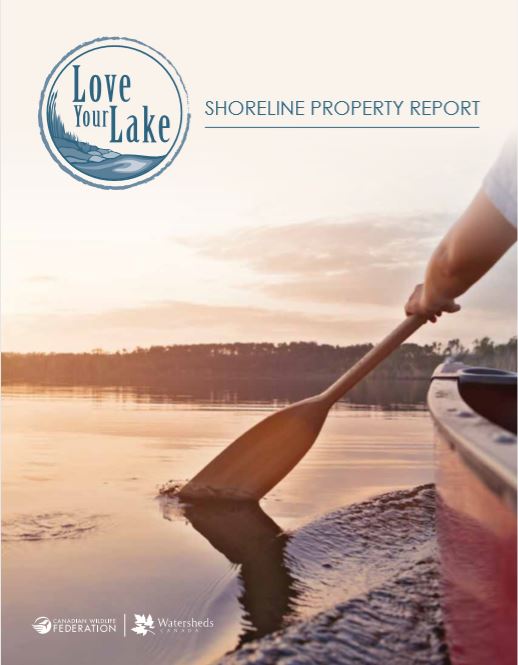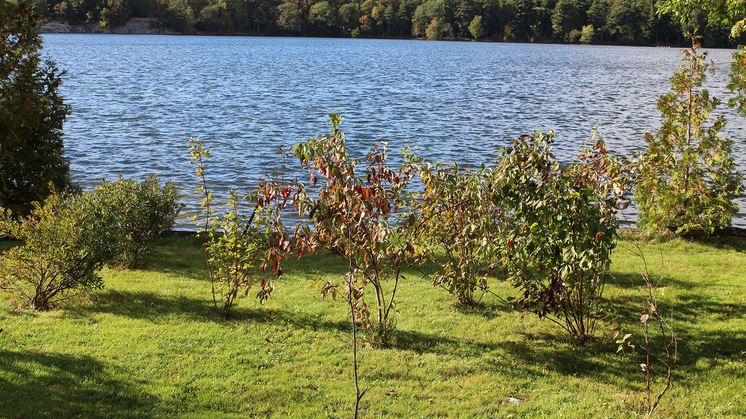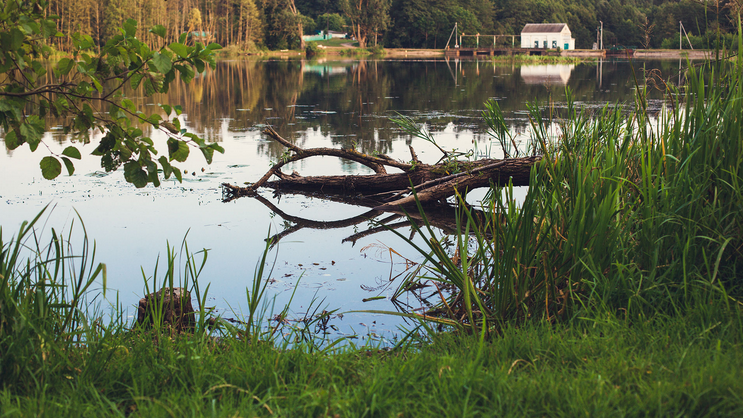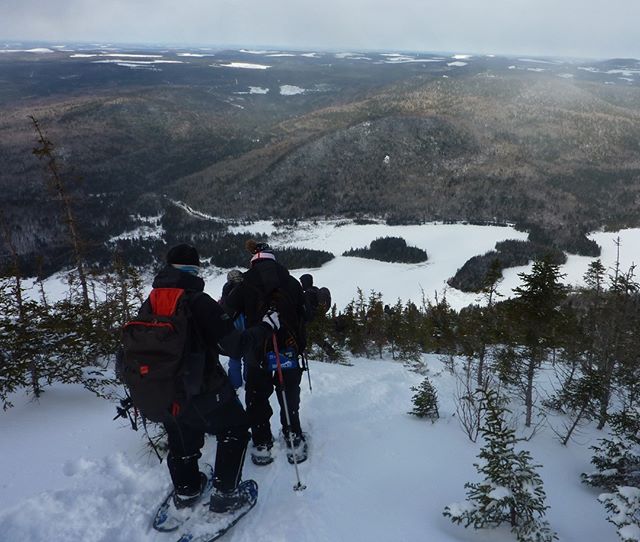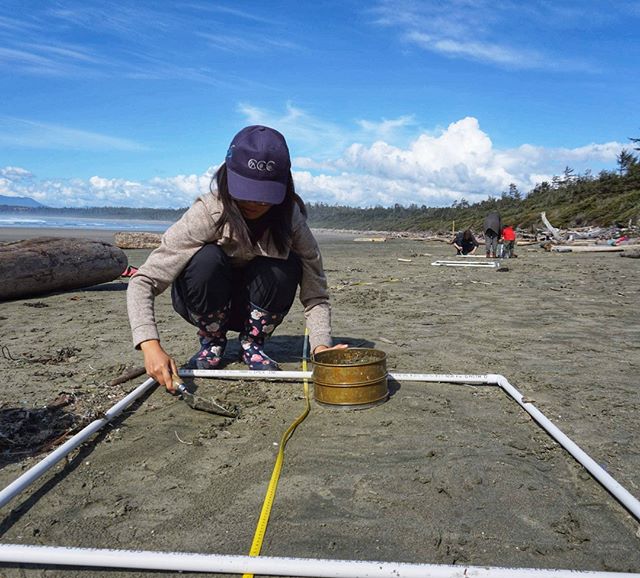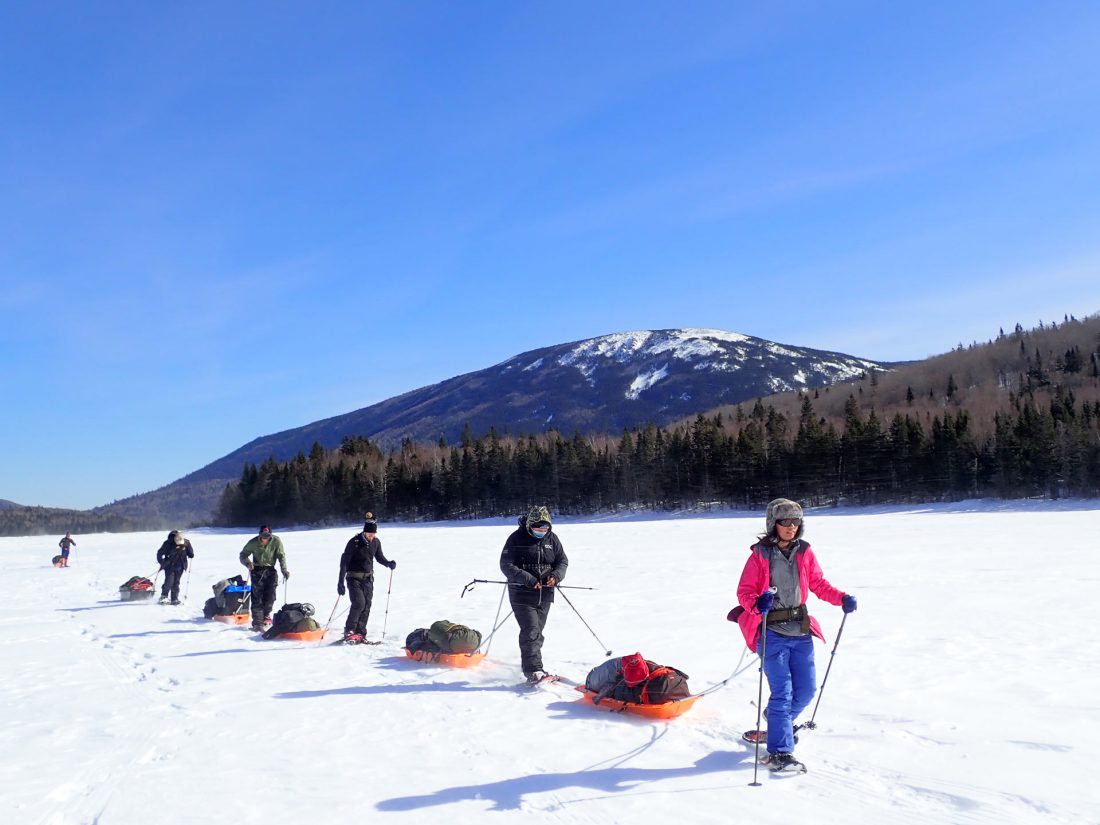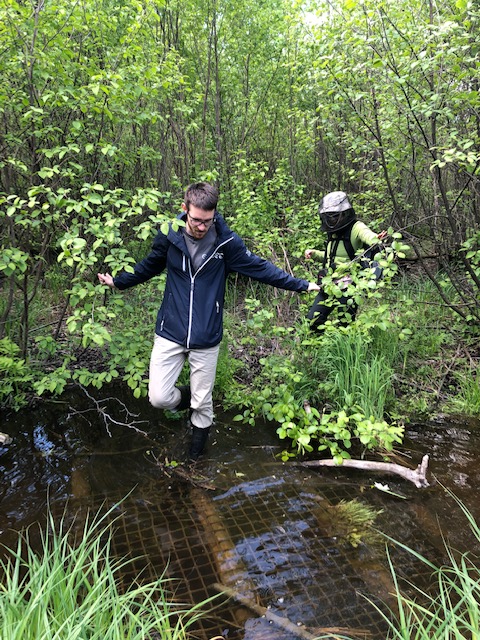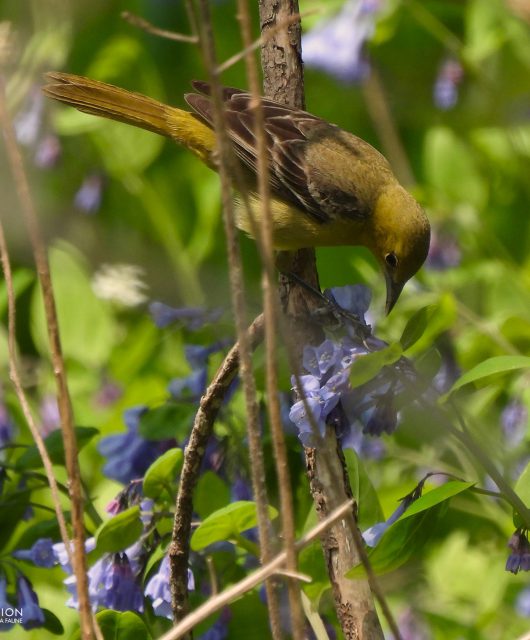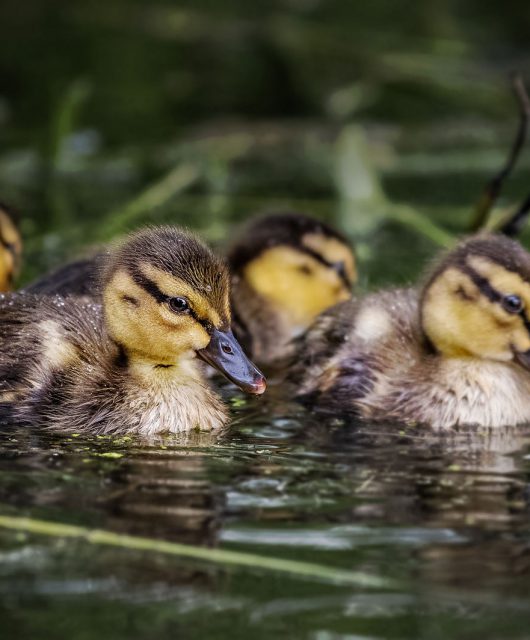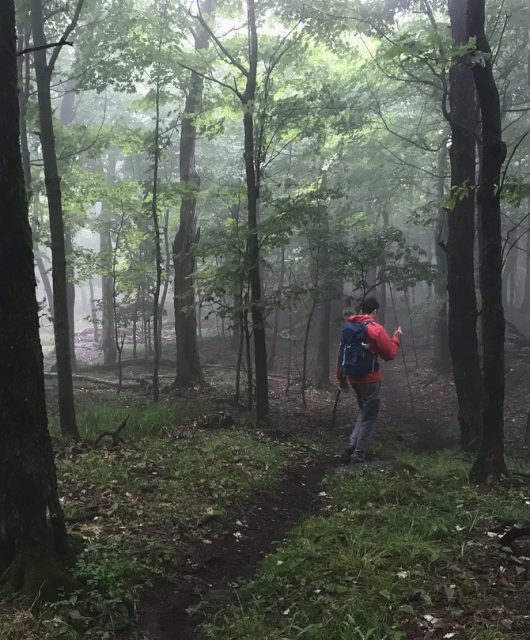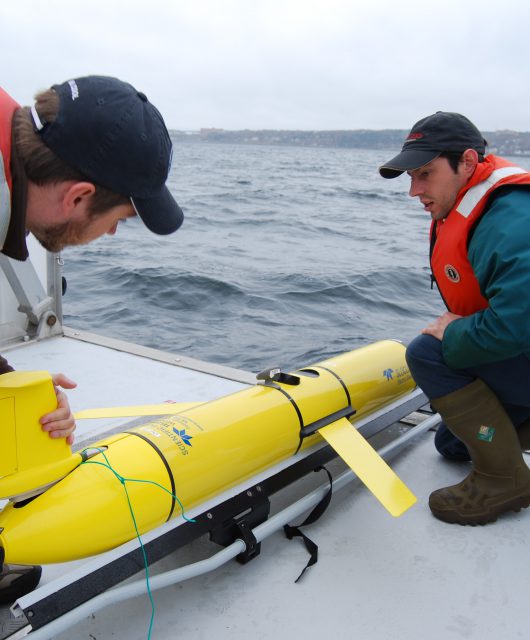Another Solid Year for Canadian Wildlife Conservation
Last year, we published a post updating you on all of the wildlife conservation and education work we were able to accomplish because of your support – and you loved being “in the know.” Since summer 2019 brought just as much research, education, outreach and conservation field work, we want to tell you all about it!
Helping the Bats
-
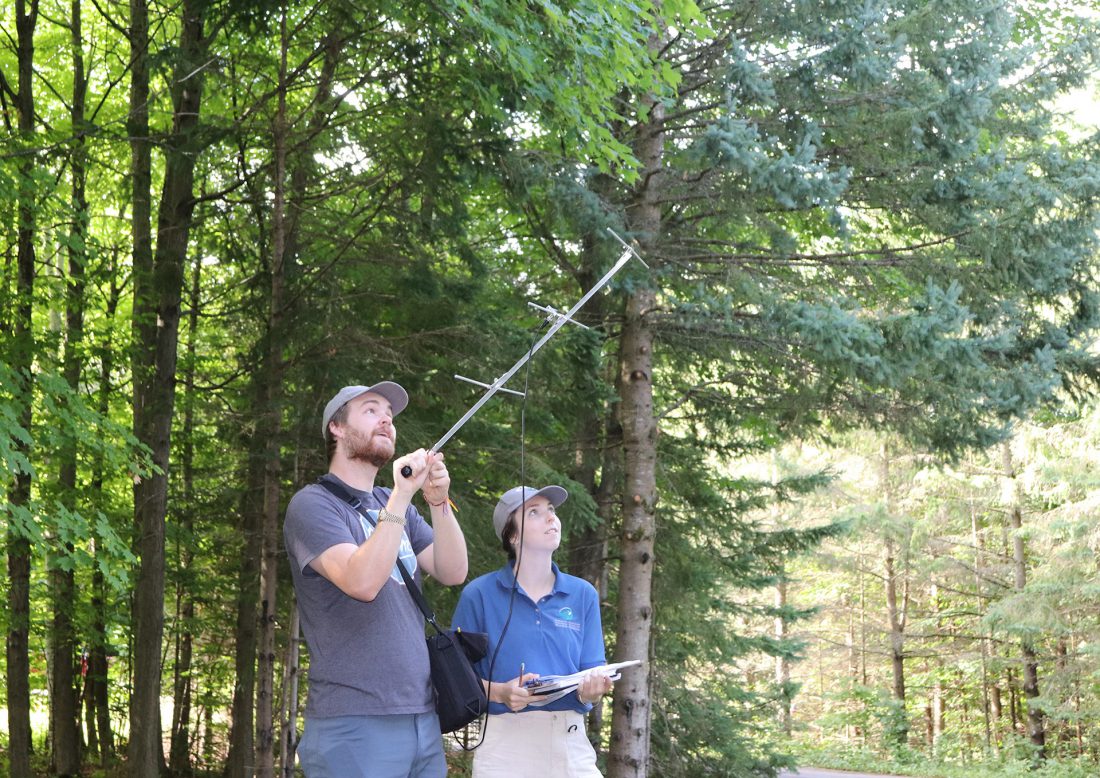
CWF’s CCC researchers Samantha and Mac radio-tracking bats. -
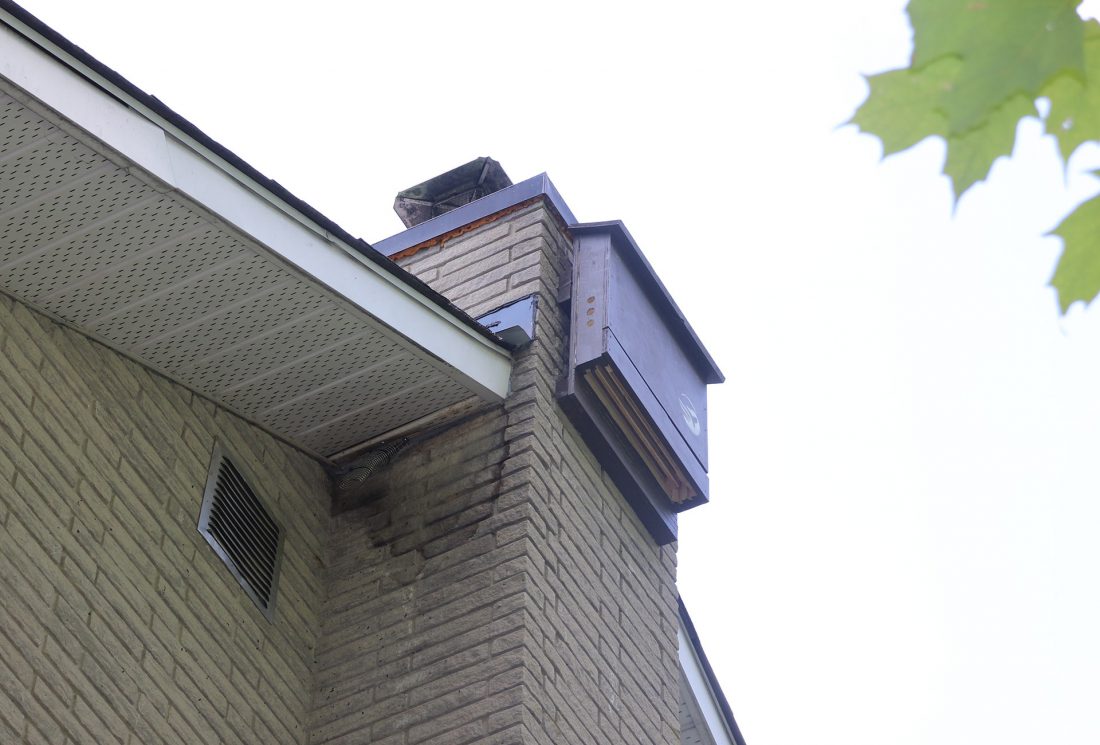
CWF’s bat house, installed at the roost site, can hold up to 300 bats! -
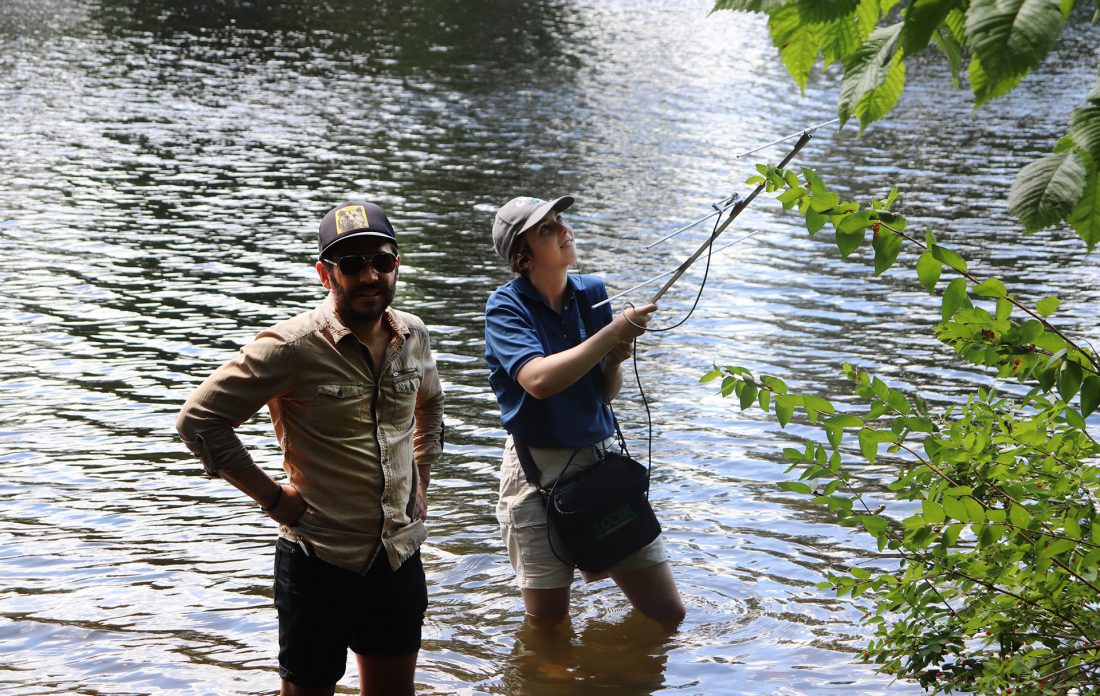
Mike and Samantha wade into the Rideau River for bat tracking. -
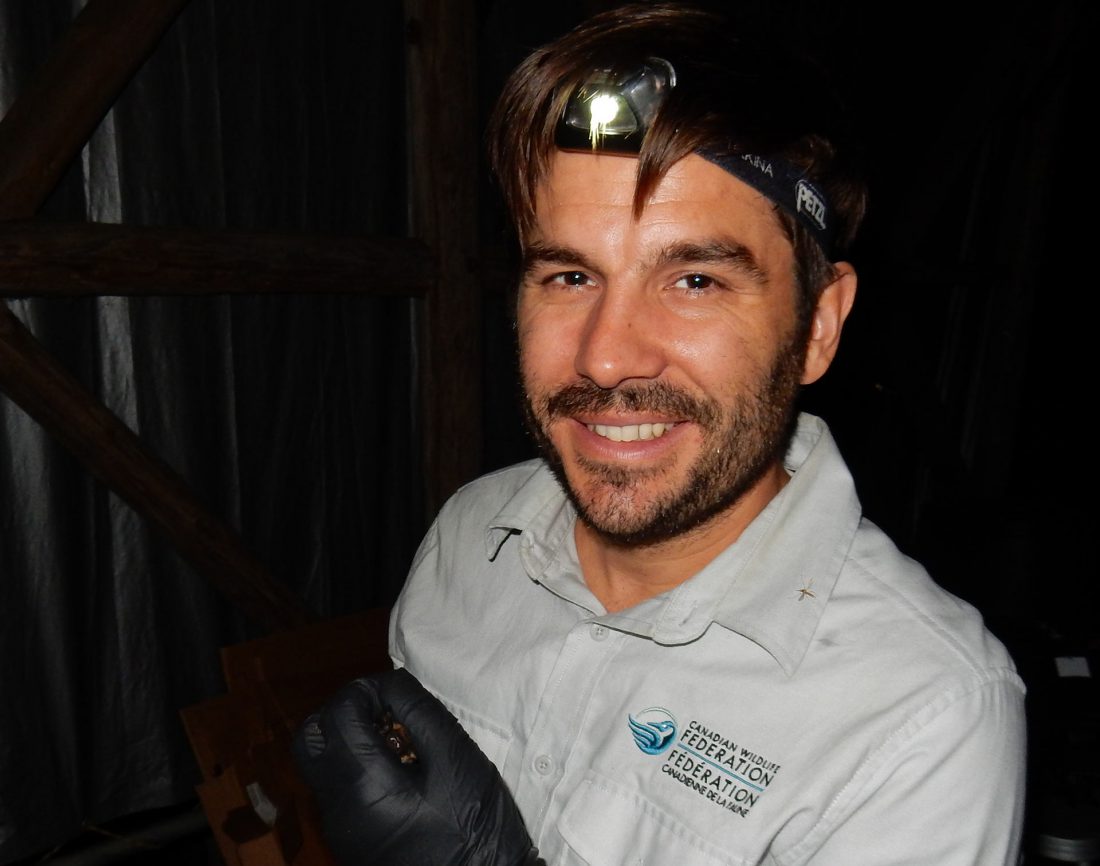
Bat Specialist Mike Anissimoff holding a big brown bat on tagging night.
The Canadian Wildlife Federation’s bat team worked hard this spring and summer to promote bat conservation. The goal of this program is to ensure the long-term survival of Canada’s at-risk bats and to keep more common bat species from becoming at-risk. Our focus this season was to expand our bat house citizen science project and to carry out a study tracking the movement patterns of bats once excluded from homes. Both of these initiatives focused on bats that inhabit human structures, such as barns or attics.
CWF was grateful for support from the Canada Summer Jobs Program and the Ottawa Community Foundation.
Our summer research included:
- Launching a Citizen Science program using iNaturalist Canada to encourage bat house owners to document their observations, in order to determine the most effective bat house design
- Developing and publishing a monitoring protocol for citizen scientists to use when uploading bat house survey results to our Help the Bats Project on iNaturalist Canada
- Distributing and installing bat houses for interested participants in the Ottawa area
- Capturing, tagging and tracking bats to determine the impact of being excluded from a home
By publicizing the best ways to help at-risk bat species and studying the impacts of exclusions, we are aiming to reduce the number of improper or unnecessary evictions taking place. We will continue bat conservation efforts through effective messaging, studies, and public engagement to support the survival and recovery of at-risk bats.
The findings of the tagging and tracking study from this summer will be summarized in a final report and made available to advance bat conservation.
Helping Freshwater Turtles
-
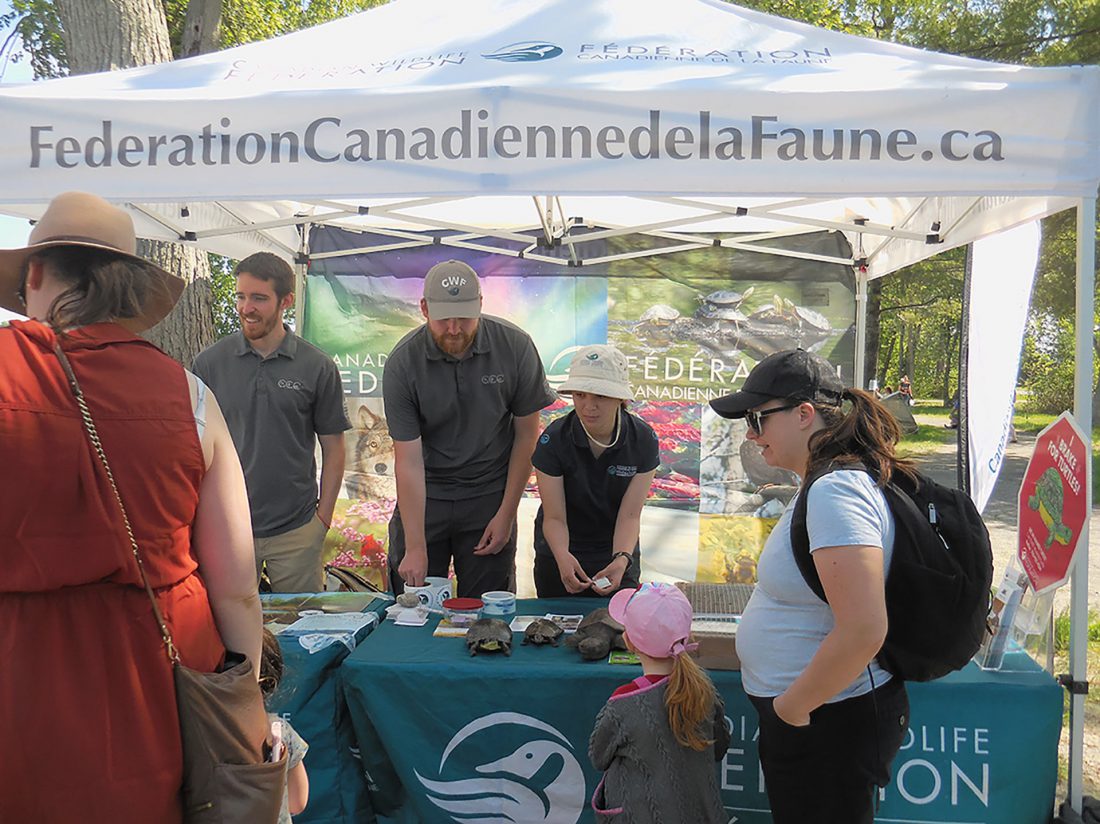
Turtle outreach event at Petrie Island, Ottawa -
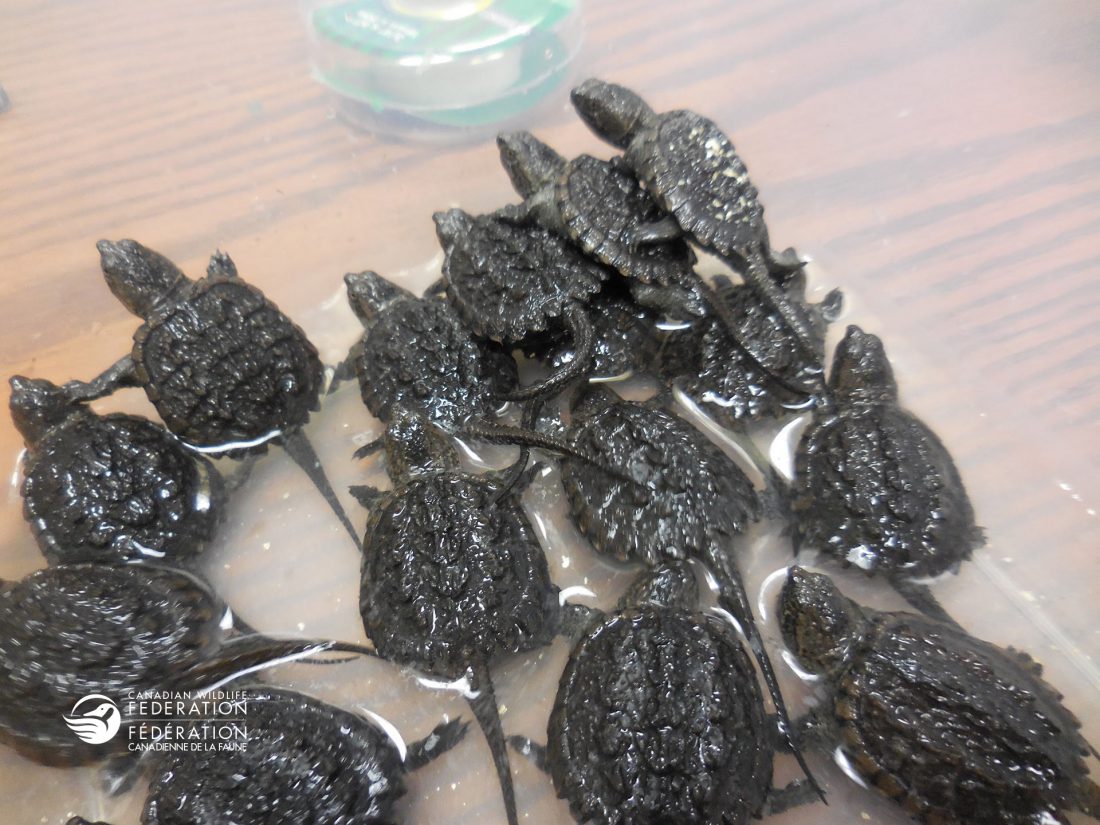
Hatchling Snapping Turtles ready to be released back into nature -
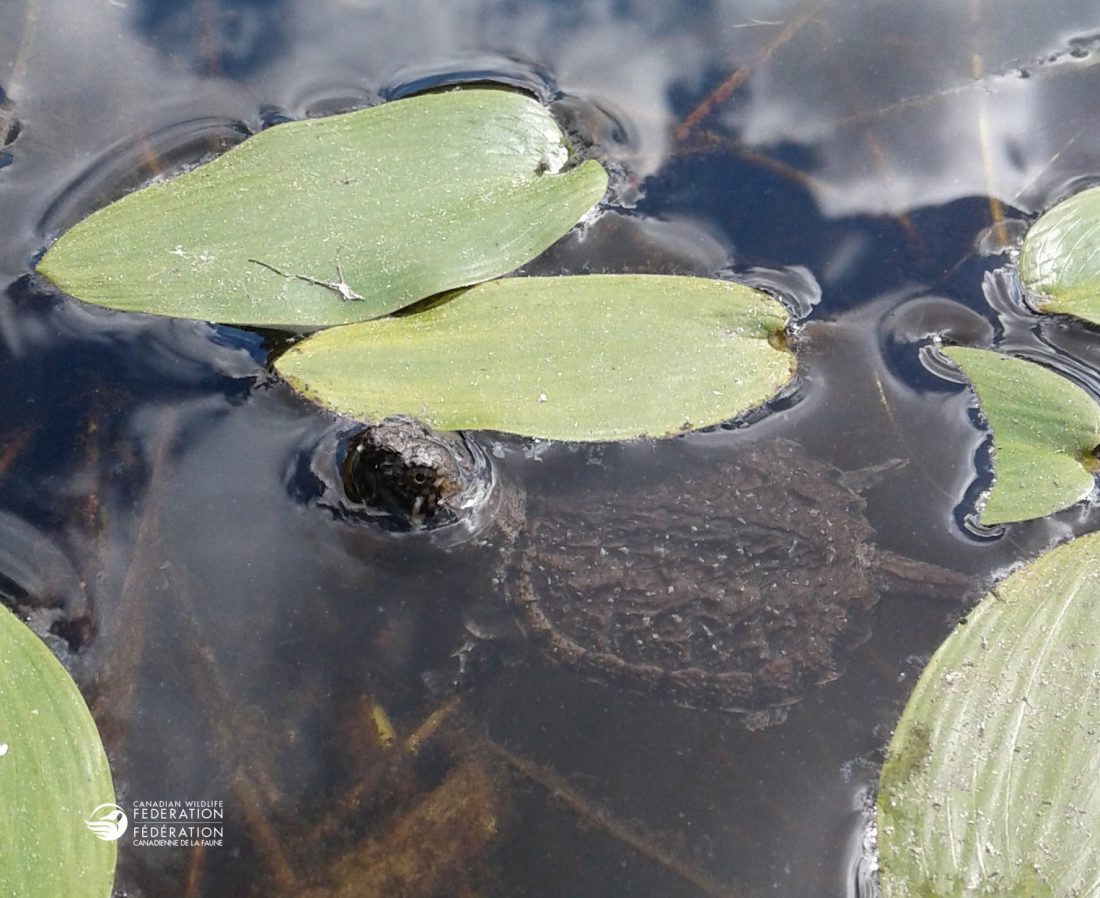
Hatchling Snapping Turtle just after being released into a wetland -
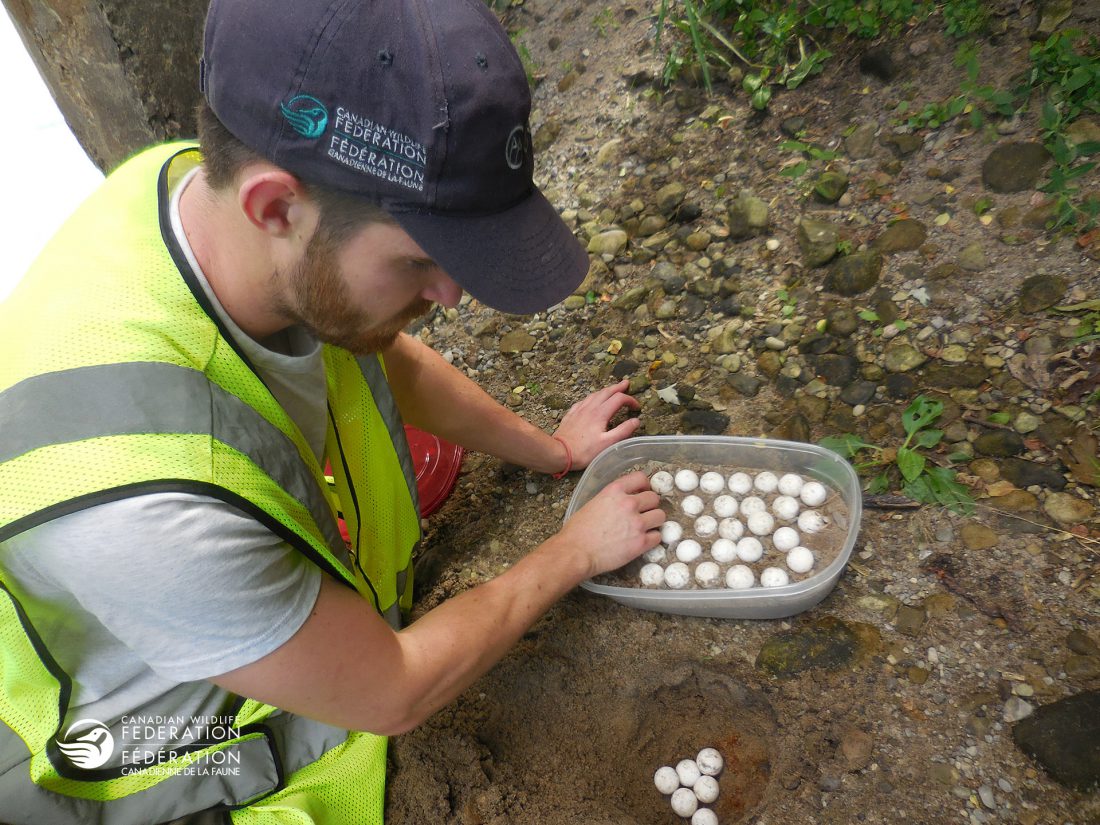
Collecting Snapping Turtle eggs to be incubated -
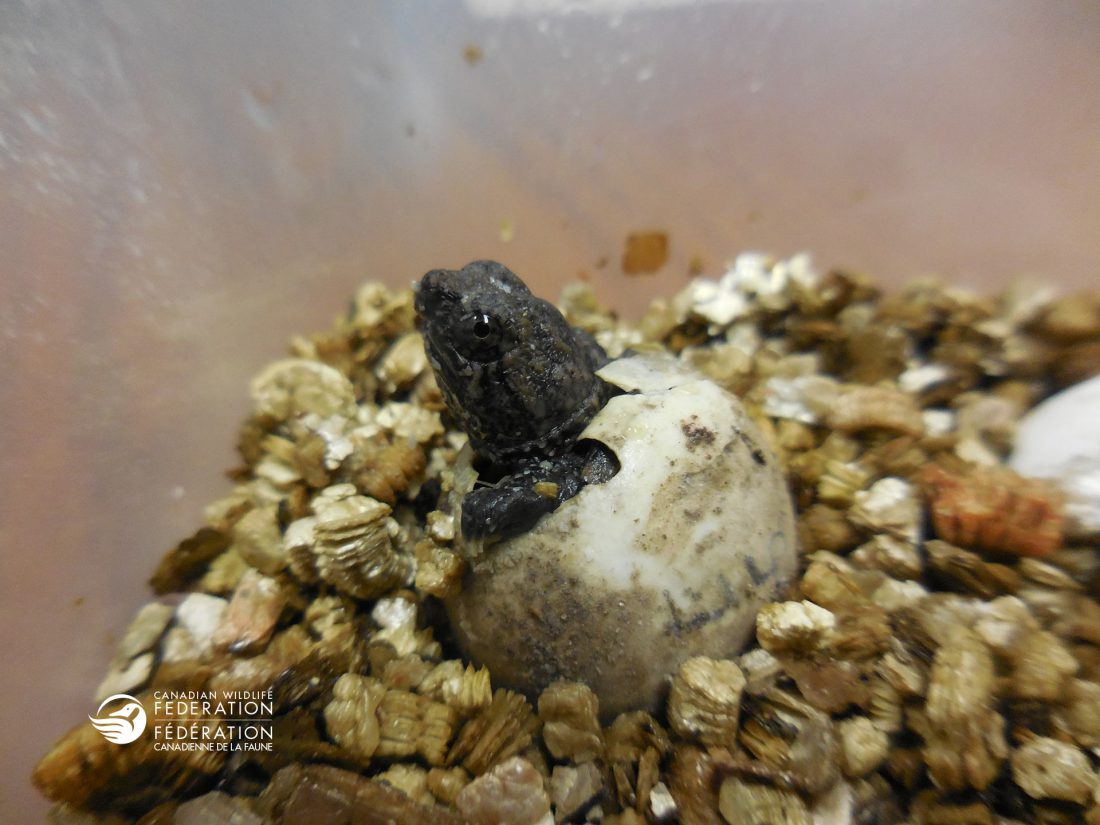
Snapping Turtle hatching from an egg
The CWF Turtle Team was very busy this year! Our field work season included:
- Conducting surveys for the Endangered Blanding’s Turtle. Our goal was to find new locations with Blanding’s Turtles in order to increase the amount of protected habitat. In so doing, we received permission from many landowners to survey wetlands on their property and found Blanding’s Turtles in five different privately owned wetlands.
- Surveying roads to find frequent turtle road-kill locations. Identifying these locations can help us push for road mitigation — such as wildlife fencing — along these sections of road to protect turtles and other wildlife. This year we found over 340 dead turtles on the roads around the Ottawa area, including 49 dead Blanding’s Turtles.
- Collecting turtle eggs laid in at-risk locations, such as roadsides. By collecting and incubating the eggs and releasing the hatchlings at the nearest wetland to the nest, we helped compensate for the number of turtles killed on roads. The eggs were successfully incubated and we released over 500 Blanding’s and Snapping Turtle hatchlings!
Helping the Eels
-
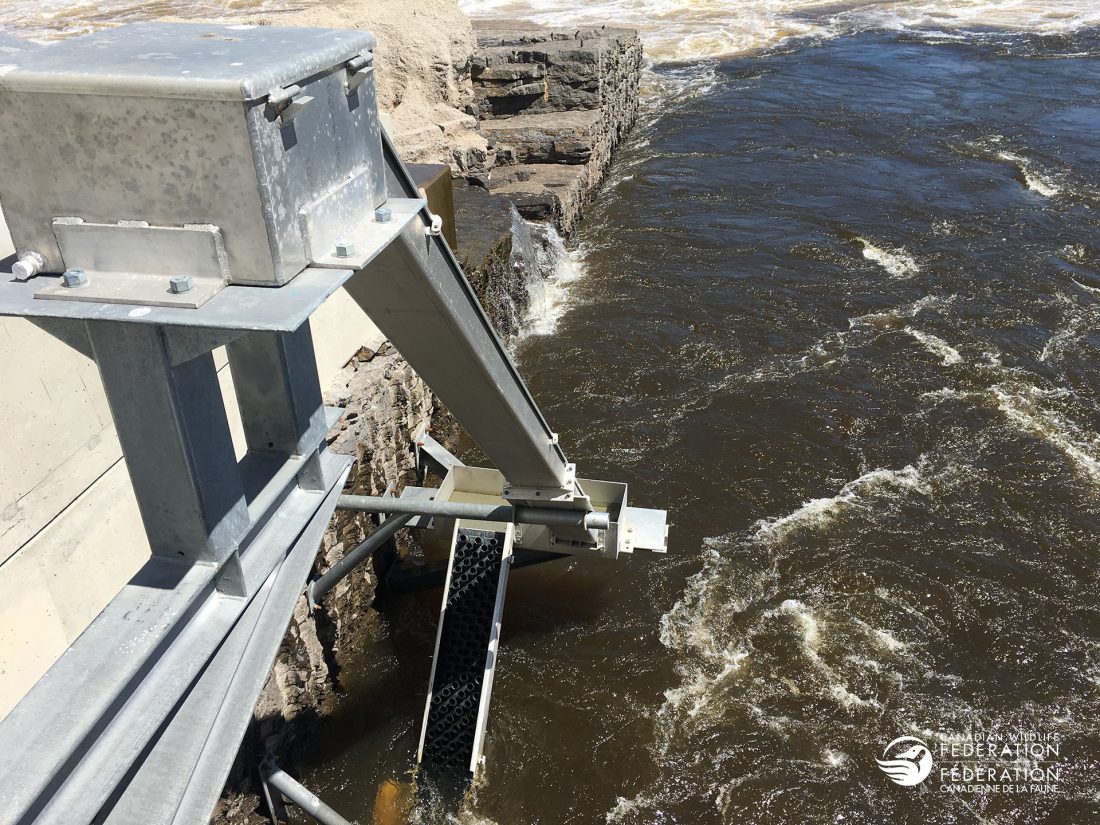
The new upstream eel passage ladder at Chaudière Falls -
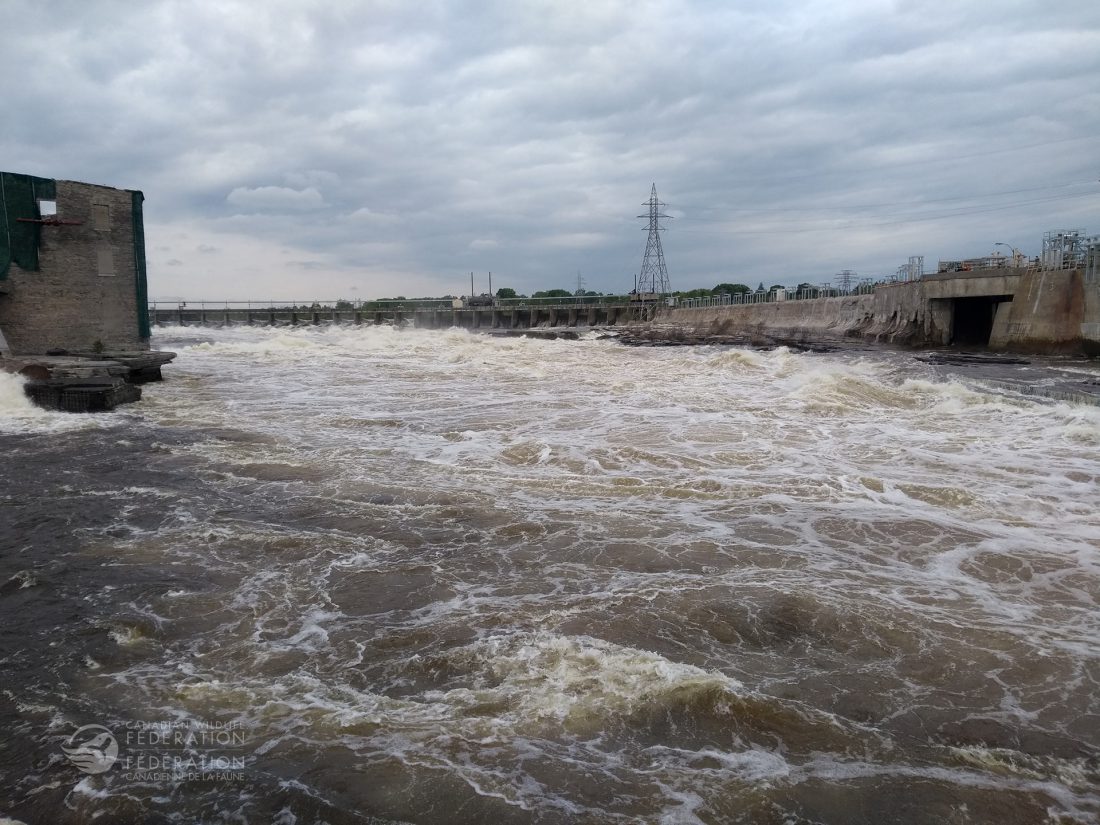
Record high water flows delayed the start of the field season -
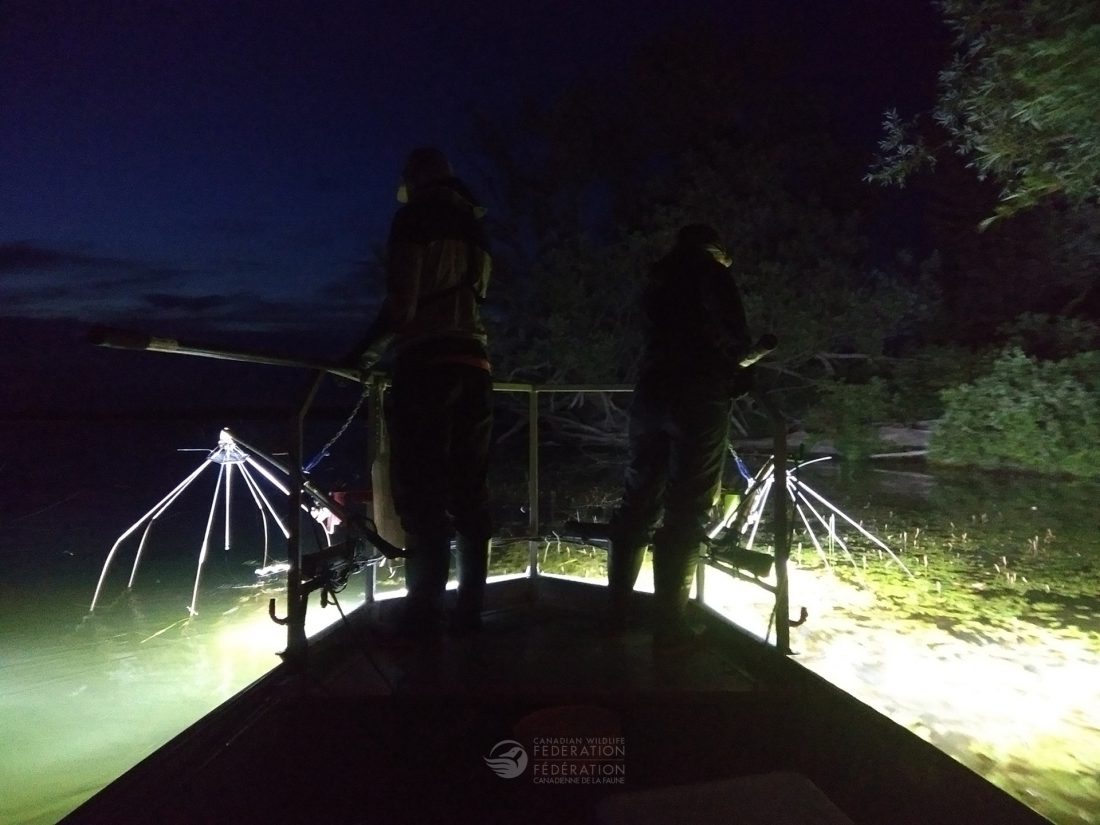
Nick and Jacquie electrofishing for eels on the Ottawa River -
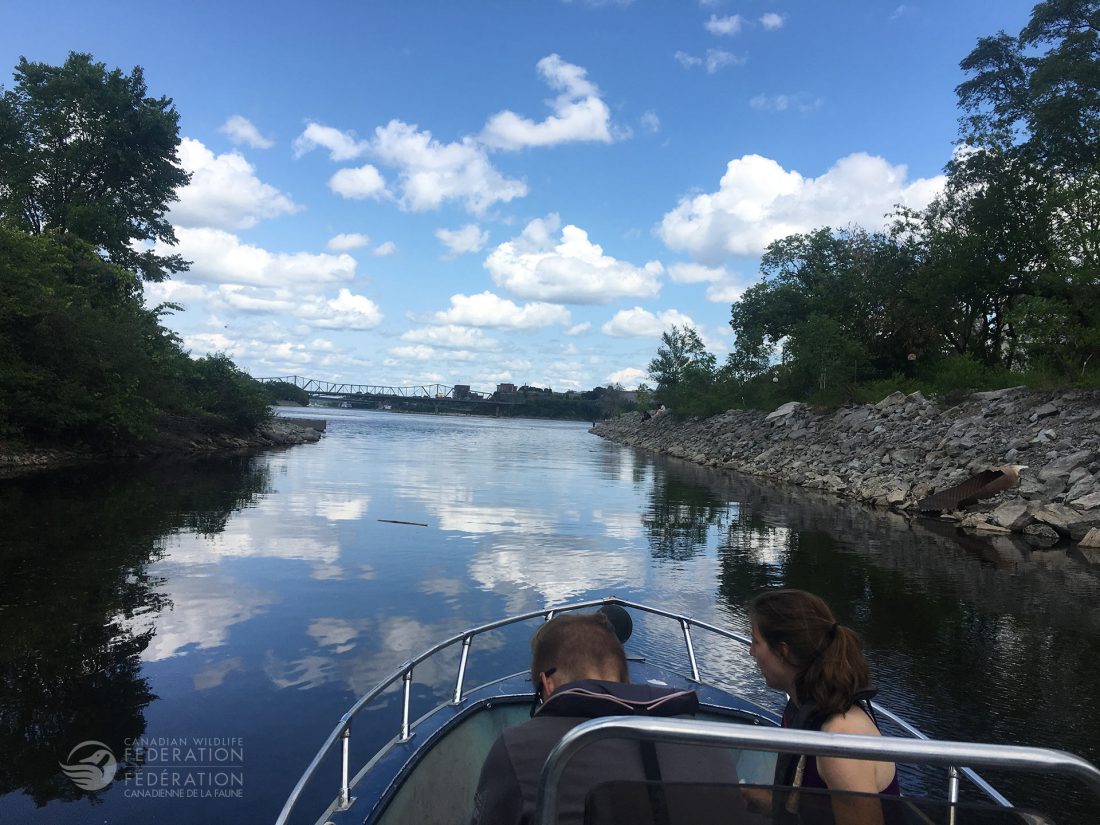
Nick and Aline monitoring our acoustic telemetry array -
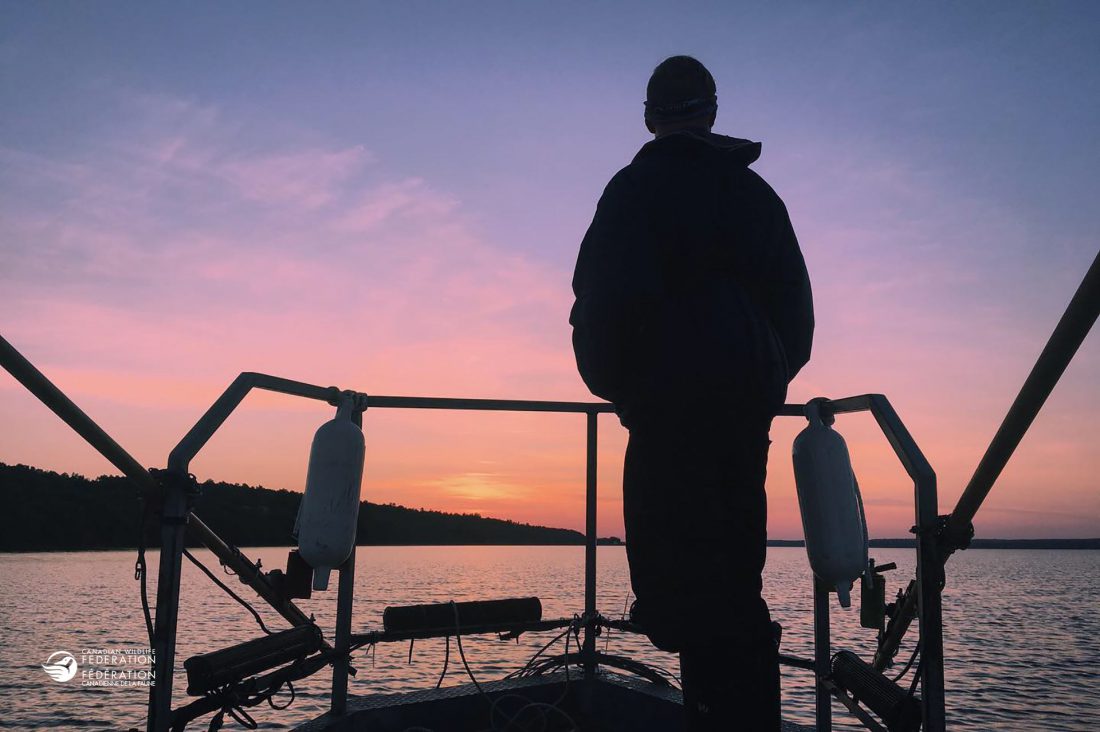
Boating off for a night of electrofishing
This summer, CWF continued its work with the American Eel in the Ottawa River. American Eels in the Ottawa River must migrate thousands of kilometres to their spawning grounds in the Sargasso Sea. This migration is being impeded by many factors, including physical barriers such as hydrodams. As a result of these challenges, eels are endangered in Ontario. CWF is working on various avenues of research to learn more about the state of the Ottawa River eel population:
- Surveying Ottawa River eel populations: Our field team conducted nighttime boat electrofishing to search for eels along 62 kilometres of shoreline between Chats Falls Generating Station and Chenaux Generating Station. Electrofishing is a scientific survey technique that temporarily stuns fish so that they can be easily sampled. This method of sampling is considered relatively harmless because fish are only stunned for a few seconds before resuming their regular activity. Unfortunately, despite the effectiveness of this surveying technique, no eels were found in this section of the river.
- Determining eels’ migratory behavior and routes past a hydrodam: For the third year running, CWF installed an acoustic telemetry array to monitor tagged adult eels as they approached and passed Chaudière Falls Generating Station during their migration to their spawning grounds in the Sargasso Sea. We’ll know how many tagged eels attempted this migration, as well as their fate, once the acoustic receivers are removed in late fall.
- Sharing best practices for anglers who incidentally capture an American Eel: CWF used data collected in summer 2018 to develop recommendations for anglers who find an eel at the end of their fishing line. With support from Cabela’s Outdoor Fund, CWF was able to share these best practices in pamphlets and online to ensure that eels captured by recreational anglers survive the experience.
- Surveying Chaudière’s tailraces for eel mortalities: During eel migration season, CWF’s field crew is spending early mornings searching for eel carcasses below Chaudière Fall’s Generating Station. So far, two eel carcasses have been found.
Helping the Marine Animals
-
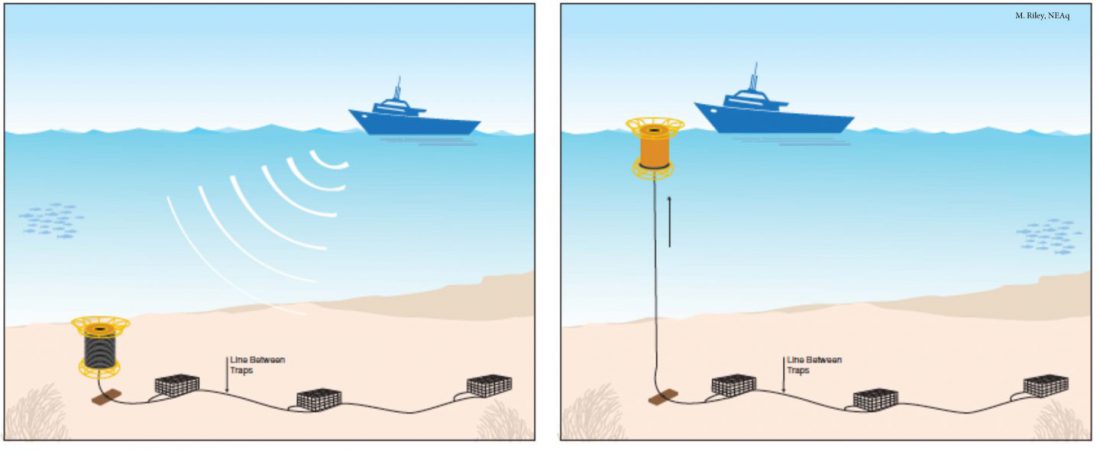
Example of a ropeless fishing gear set up. -
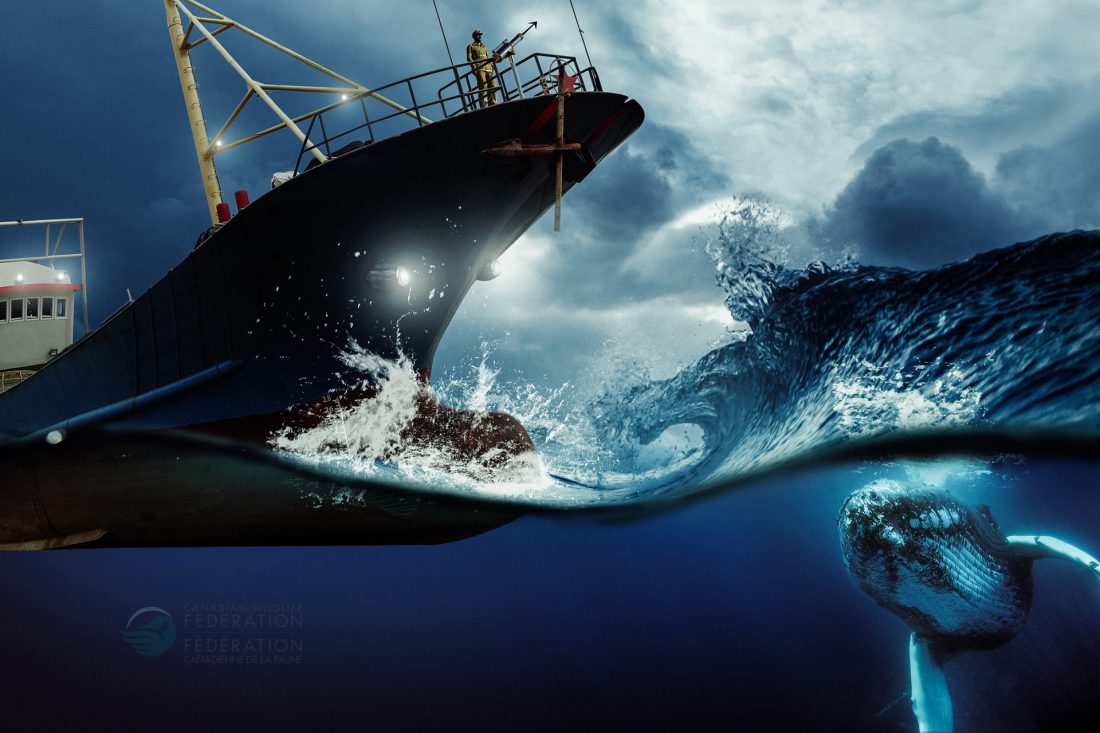
Ship strikes happen all-too often. -
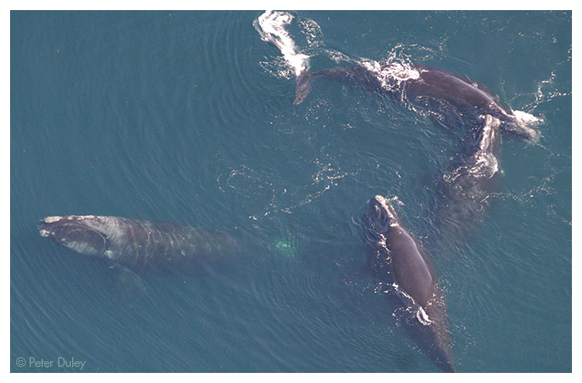
North Atlantic Right Whales. -
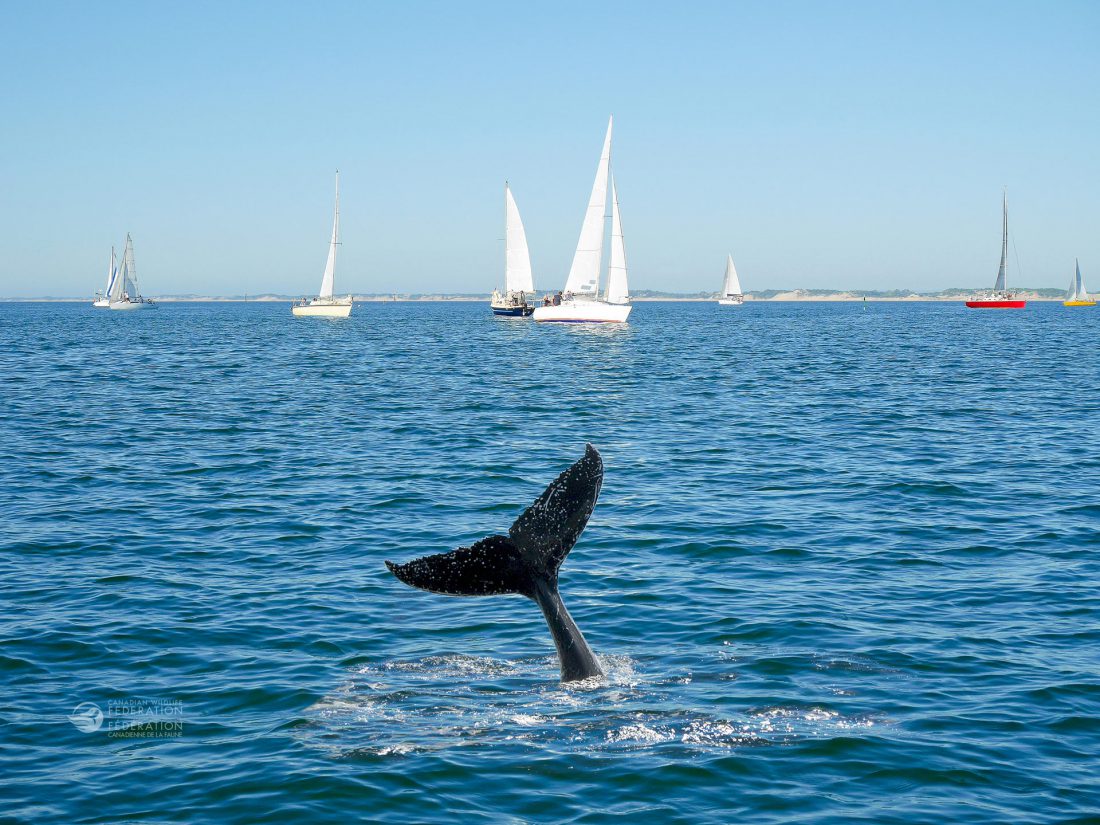
Does the size of the ship matter in ship strikes? -
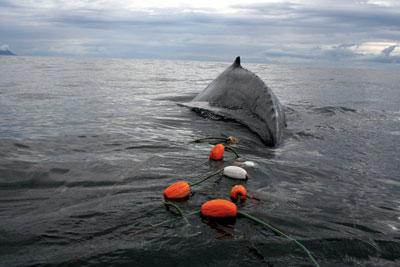
Entanglement is one of the many emergencies CMARA faces.
Marine mammals, particularly Canada’s large whales, are facing increasing risk of entanglement in commercial fishing gear and from ship strikes. CWF’s Marine Team has been working alongside government and industry to continue important work aimed at quantifying these risks and developing innovative approaches to mitigate risk and improve fisheries management measures. Currently focusing on Atlantic Canada, we have been:
- Making final adjustments to a computer model that predicts the severity of impact on large whales during a collision with a ship. This model considers many variables of the whale and of the vessel, along with simple Newtonian physics. With this model we can determine, with a degree of certainty, which vessel size and speed can cause injuries severe enough to kill large whales in the event of a collision.
- Developing a predictive model that estimates the displacement of fishing effort in commercial fisheries as a result of closures implemented for the protection of North Atlantic Right Whales. This model allows us to quantify the socio-economic costs to a fishery subjected to fishing exclusion zones, as well as to understand the changes in the spatial pattern of fishing activity. Changes in the spatial pattern can influence the risk of entanglement to whales; thus, the model can quantify the effectiveness of these types of closures as an entanglement mitigation tool. Quantifying and understanding the trade-offs of conservation benefits and economic costs are crucial for developing well-informed policies and management strategies. Therefore, we are working with Fisheries and Oceans Canada to develop this model into a tool to be used to improve current fishing management measures.
- Collaborating with fish harvesters to test ropeless fishing gear to determine the potential these systems have for commercial fisheries in Atlantic Canada. To date we have met with more than 30 fisheries stakeholders to discuss how these systems need to be tested and evaluated to meet the day-to-day requirements of the industry. Testing at sea has begun and will continue into the fall.
Ultimately, we focus on providing solid science to support evidence-based recommendations for reducing or avoiding risks to whales.
Helping the Birds
-
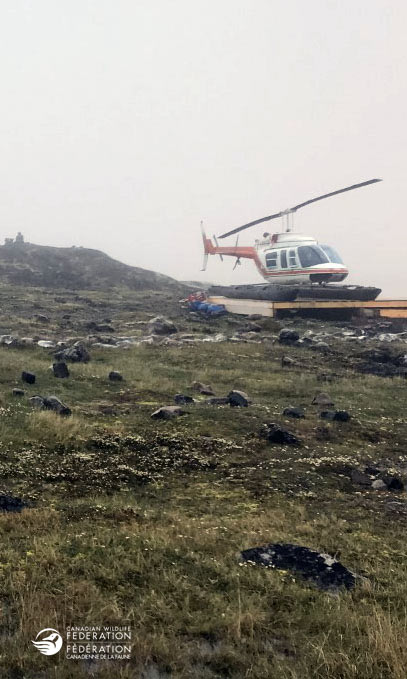
Fogged in. -
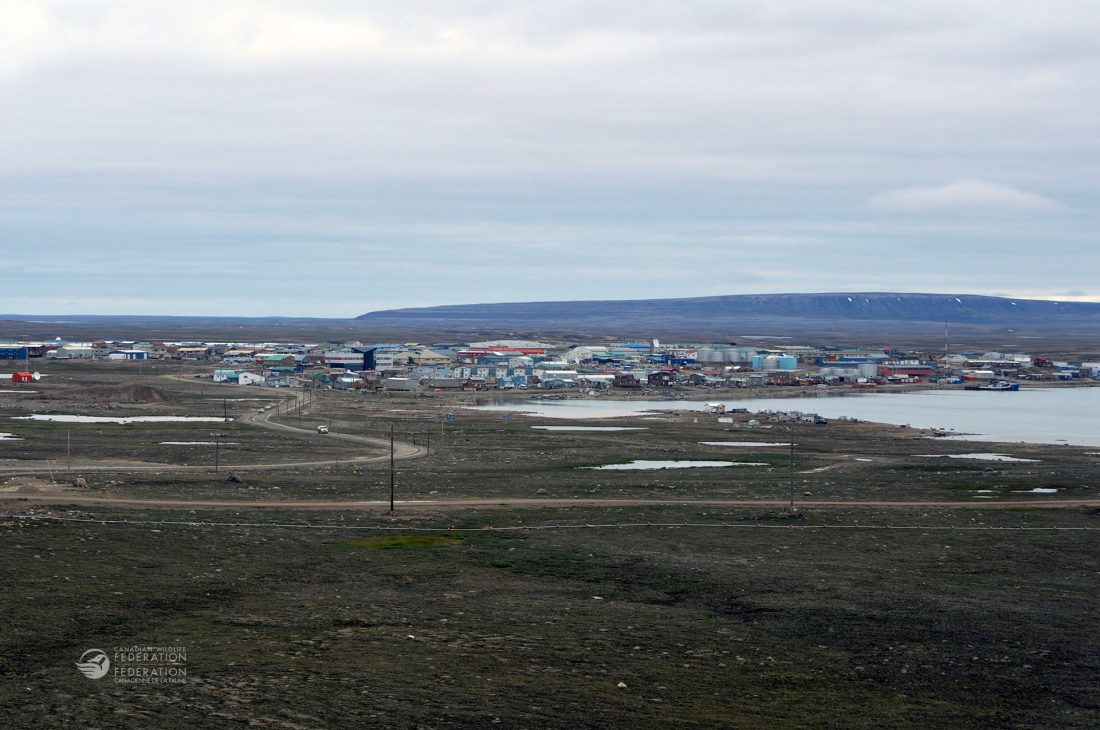
Cambridge Bay, NU -
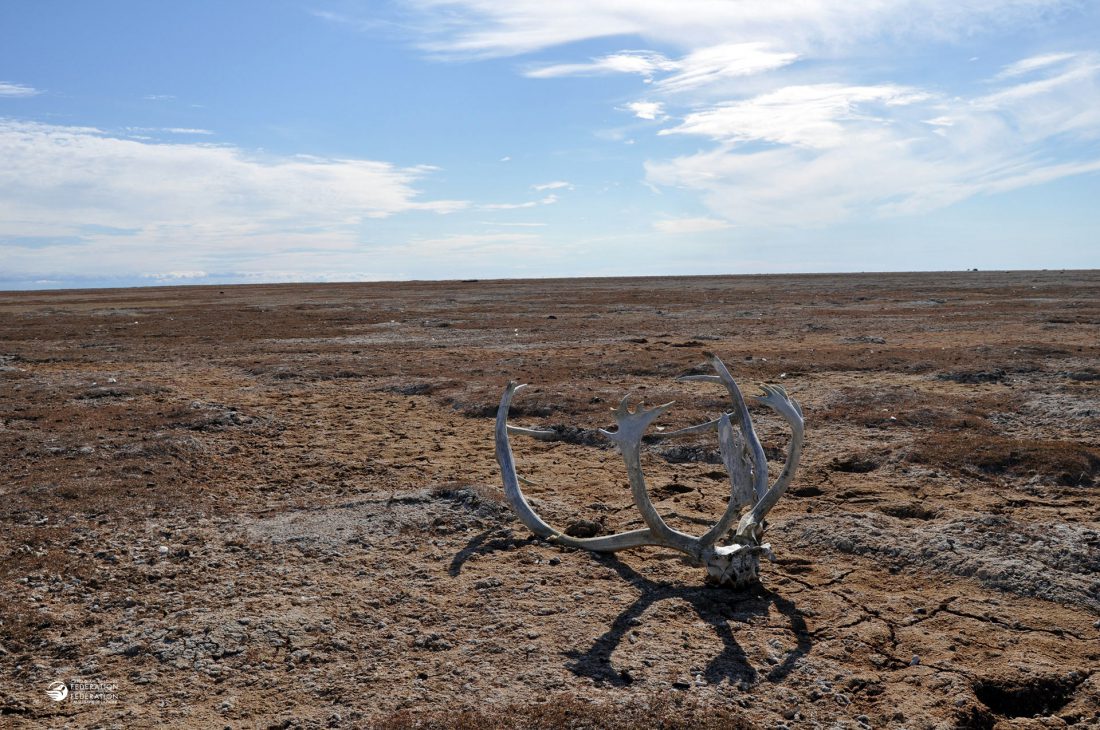
Caribou antlers. -

Views of the coast. -
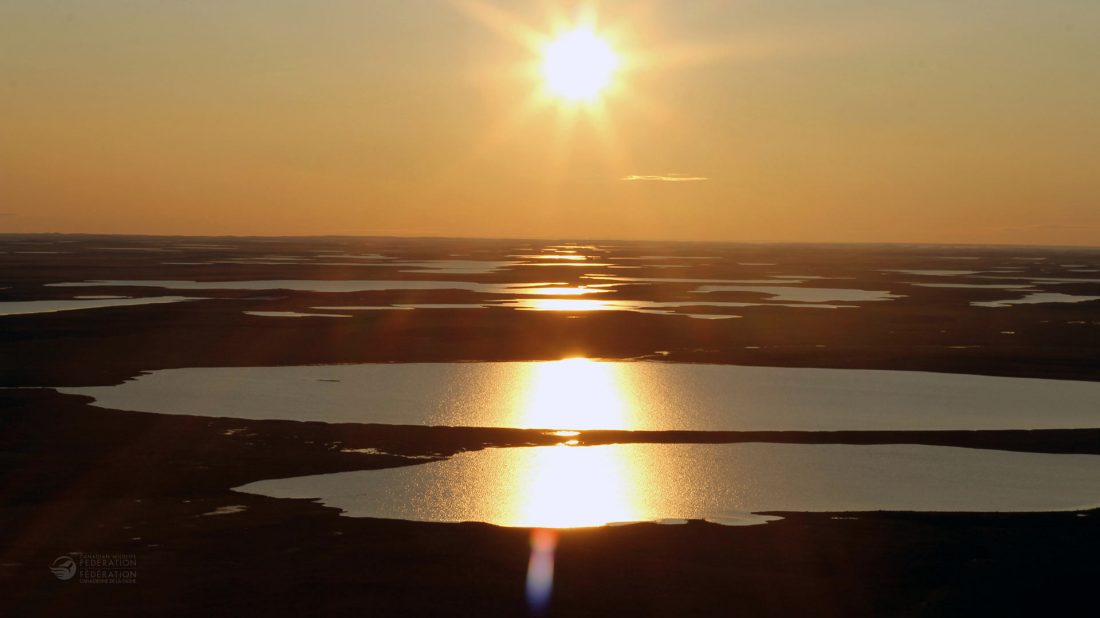
Sun over the arctic. -
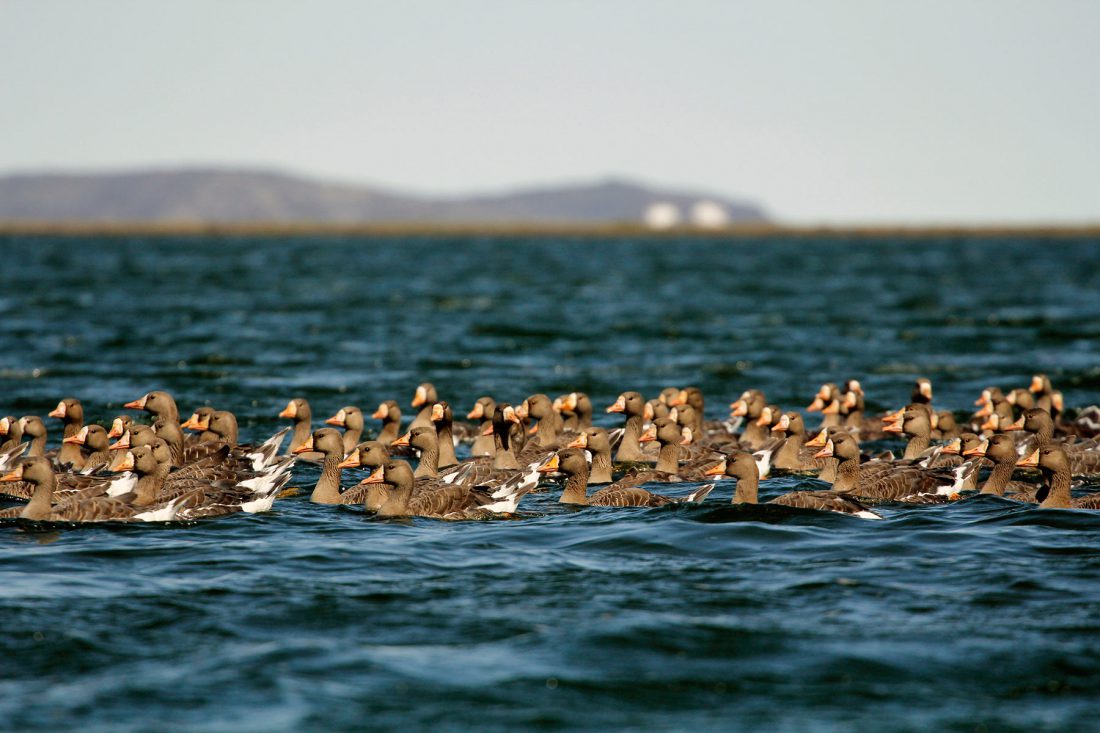
Greater White-fronted Geese.
In July, CWF Wildlife Biologist Nathan Clements was positioned in a field camp along the Perry River, Nunavut.
- His work included banding Greater White-fronted Geese and Cackling Geese in order to monitor Arctic and sub-Arctic geese and their migrations throughout the continent.
- Roughly 1,500 geese were banded, which is slightly below the banding program targets set by the Arctic Goose Joint Venture. The shortfall in goose numbers can be largely attributed to inclement weather.
The lead organization, the Arctic Goose Joint Venture, works cooperatively with partners to provide a coordinated and cost-effective approach to meeting high priority information needs for the management of northern-nesting geese. CWF is a supporting partner of the AGJV, along with the Canadian Wildlife Service, U.S. Fish & Wildlife Service, state and provincial wildlife agencies of all four flyways, and other non-government organizations. This partnership approach is especially valuable for conducting Arctic research where logistics are more costly and where maximum return from available funds is highly desirable.
Helping our Lakes
We were loving Canada’s lakes again this summer with Love Your Lake – a joint program between CWF and Watersheds Canada!
- Thanks to our regional partners in Ontario, Saskatchewan and British Columbia (new this year), we assessed approximately 2,500 shoreline properties on 12 lakes.
- This fall and winter, we’ll be busy preparing the shoreline property reports to have them ready for spring 2020.
- Since 2013, we have assessed nearly 40,000 shoreline properties on 163 lakes!
For more information on Love Your Lake, to see if your lake has been involved, for a shoreline self-assessment and for lots of helpful information on how you can love your lake, please visit LoveYourLake.ca!
Helping the Salmon
-
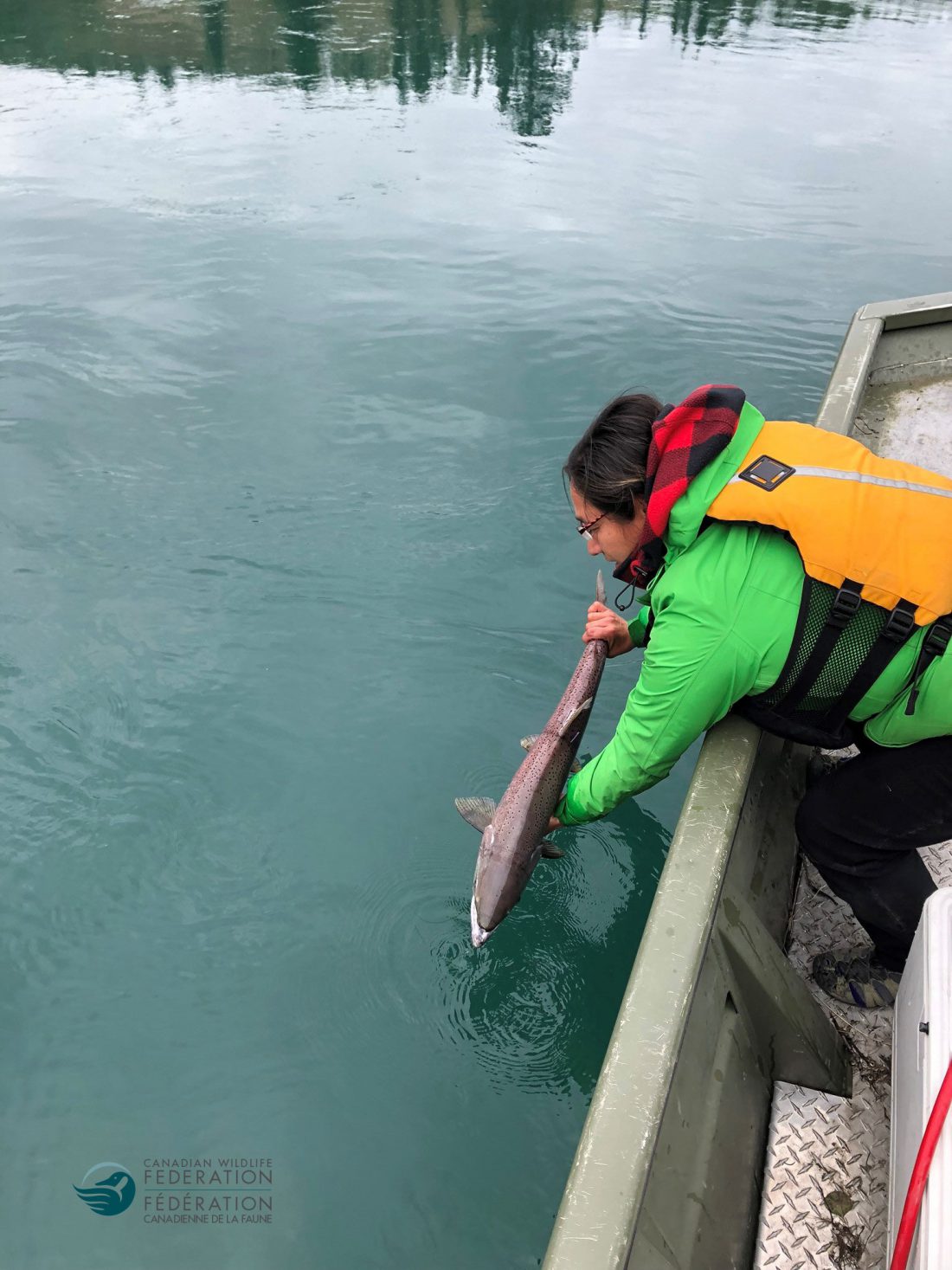
Cora Lee Johns from C/TFN releasing a tagged salmon -
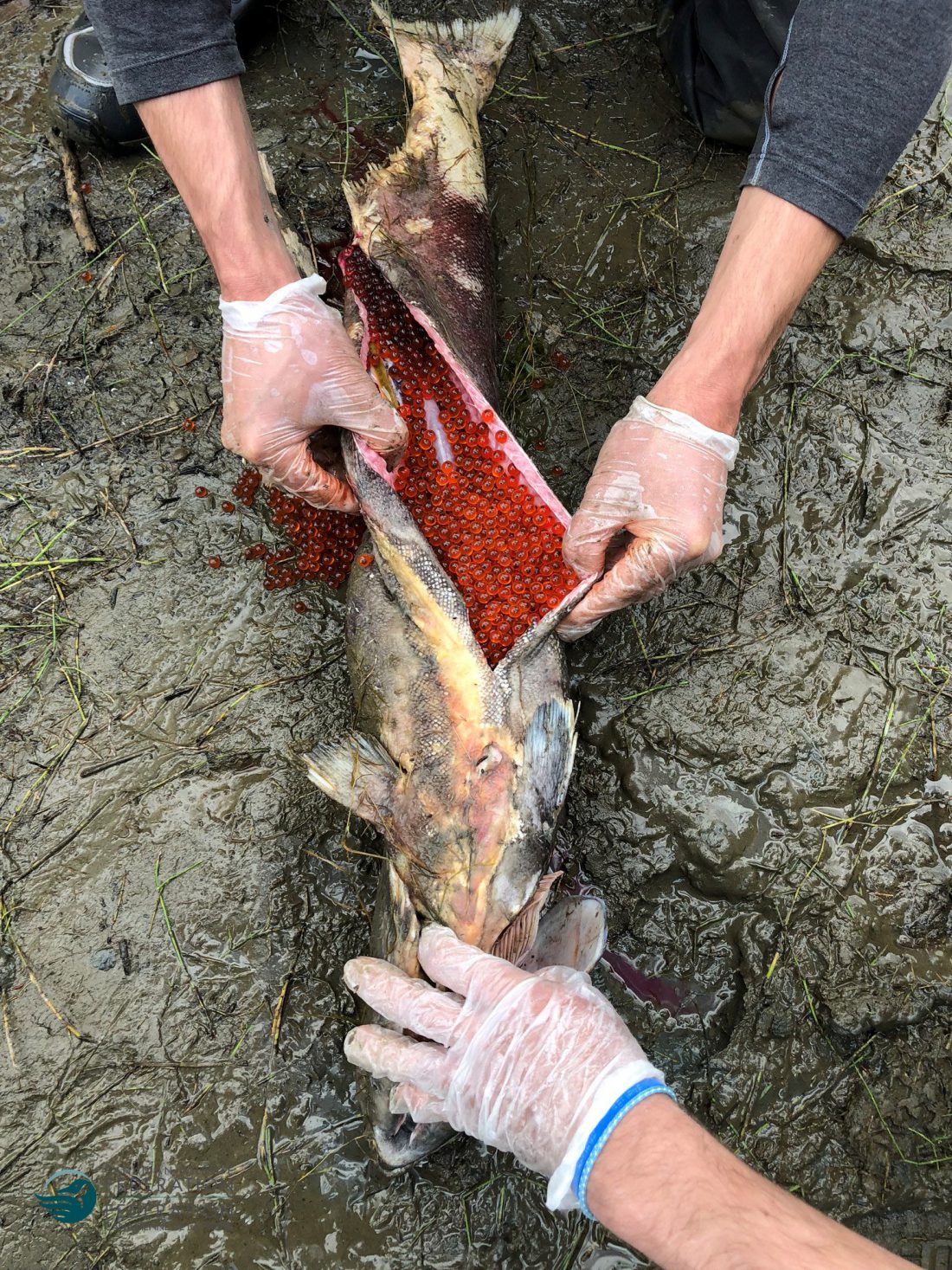
Chinook salmon that failed to successfully spawn we are documenting this as part of our salmon surveys -
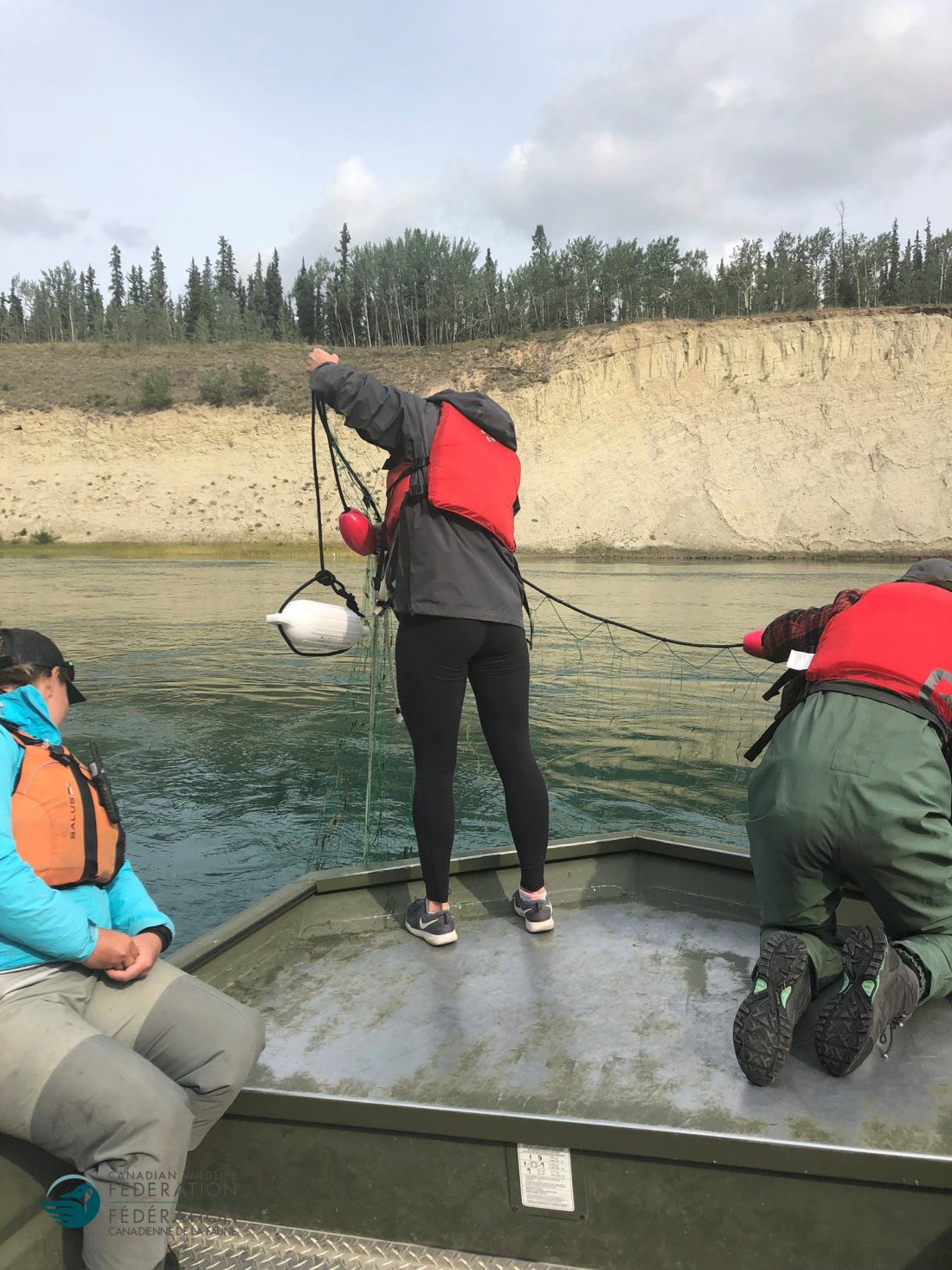
Checking a gill net for a chinook salmon for our tagging project -

Will Twardek of Carleton University and Canadian Wildlife Federation tagging a Chinook Salmon with an acoustic tag -
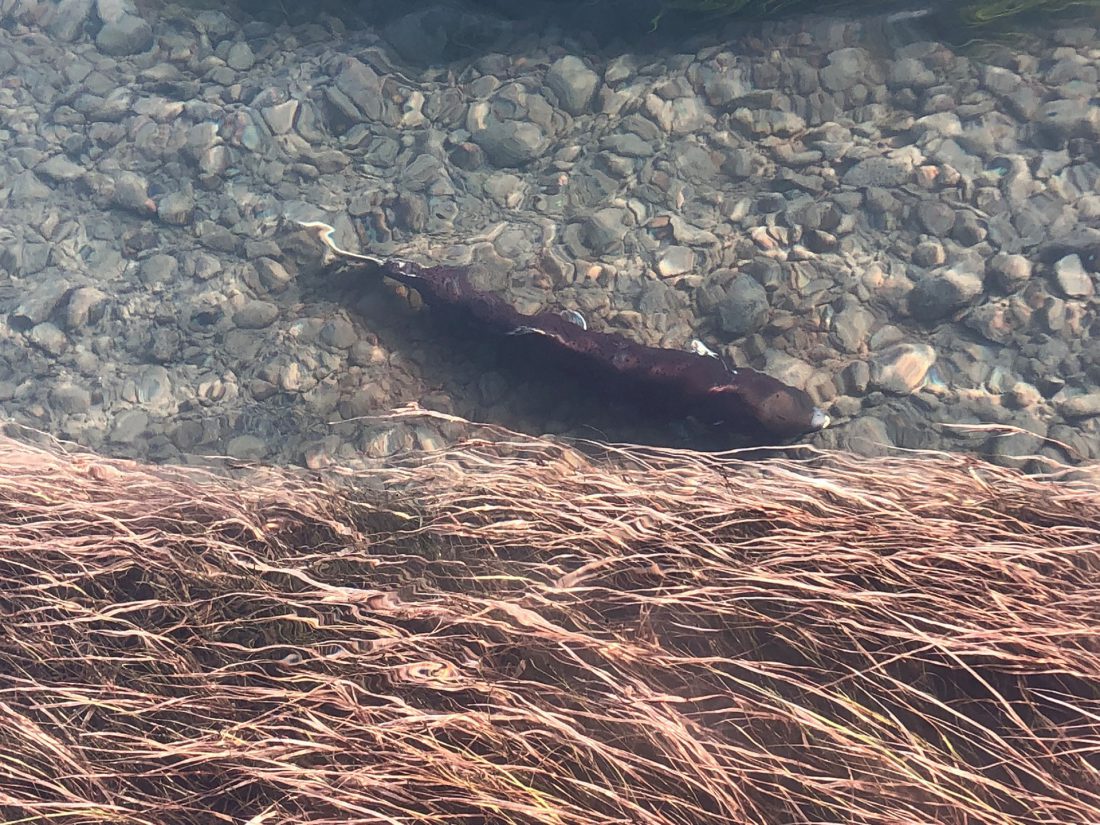
Chinook salmon preparing to spawn -

Will Twardek about to take off in a bush plane to track tagged spawning chinook salmon -
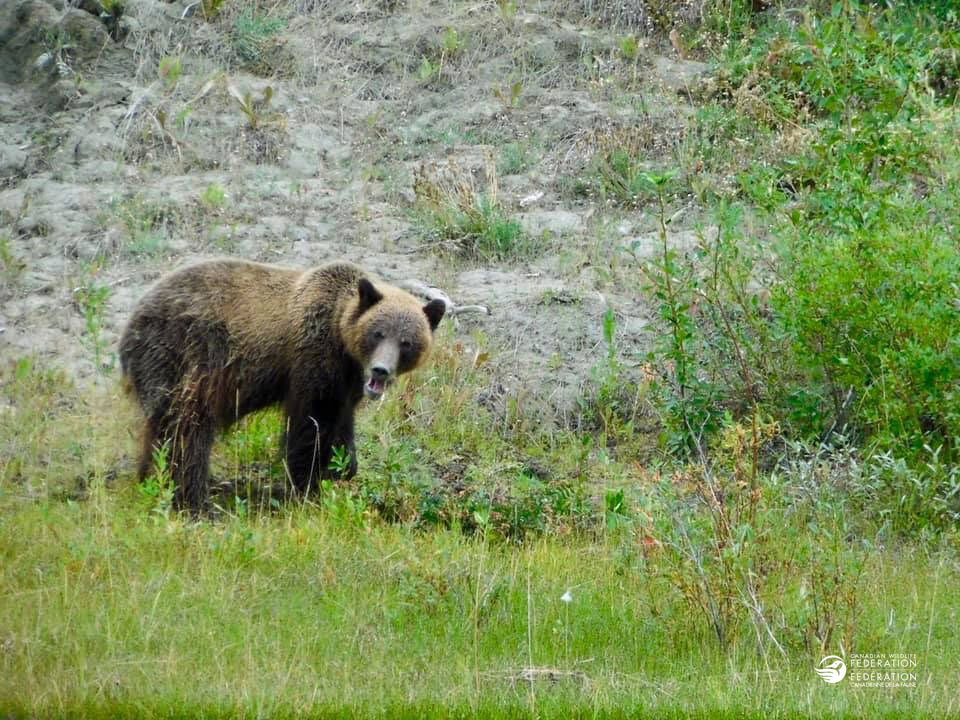
Grizzly bear at our fishing/tagging site
CWF is working with local partners to study the migration of Chinook Salmon in the furthest reaches of their run near Whitehorse. These fish have travelled approximately 3,200 kilometres from the Bering Sea, making it the longest inland salmon migration on Earth.
Compared to historic records, populations have been depleted for decades; we are undertaking research to find out why and what we can do to help. Chinook are the king of the Pacific Salmon, and we are working with a very special population of the species. We take care to minimize the effects of our research on the individuals that we encounter, and we are honoured to work with the local community towards the conservation of these individuals. Special thanks to Carcross/Tagish First Nation, Kwanlin Dün First Nations, Ta’an Kwach’an Council, Champagne and Aishihik First Nations, Yukon Energy, Fisheries and Oceans Canada, Yukon Fish and Game Association, and Carleton University for taking part and supporting this project.
For the past two summers, we have been:
- Implanting fish with acoustic transmitters to monitor their migration
- Tracking their movements as they approach the Whitehorse Hydro Plant, pass the world’s longest wooden fish ladder, and continue to their spawning grounds
- Tagging as many fish as we can. Thus far we have tagged 208 fish. We will know how they fared by mid-September once their spawning run is complete and we retrieve data from our acoustic telemetry array.
Helping our Youth
This summer alone, CWF facilitated more than 75 Canadians between the ages of 18 and 30 getting out and experiencing wildlife with the CWF Canadian Conservation Corps program. Next, these youth volunteered full-time at various conservation organizations across Canada.
- The Pack: January 4 to July 31, 2019
- Wintertide: February 20 to September 6, 2019
- Paddle To The Sea: April 13 to October 31, 2019
- Eight Mile: May 8 to November 29, 2019
- Land Sharks: June 7 to December 20, 2019
- Douze Canoes: August 3 to February 28, 2020
- The Mount10eers: August 24 to March 30, 2020
Since its inception in 2017, CCC has ushered 100+ Canadian youth from all walks of life through the three-step wildlife conservation education program.
Helping our Pollinators
-
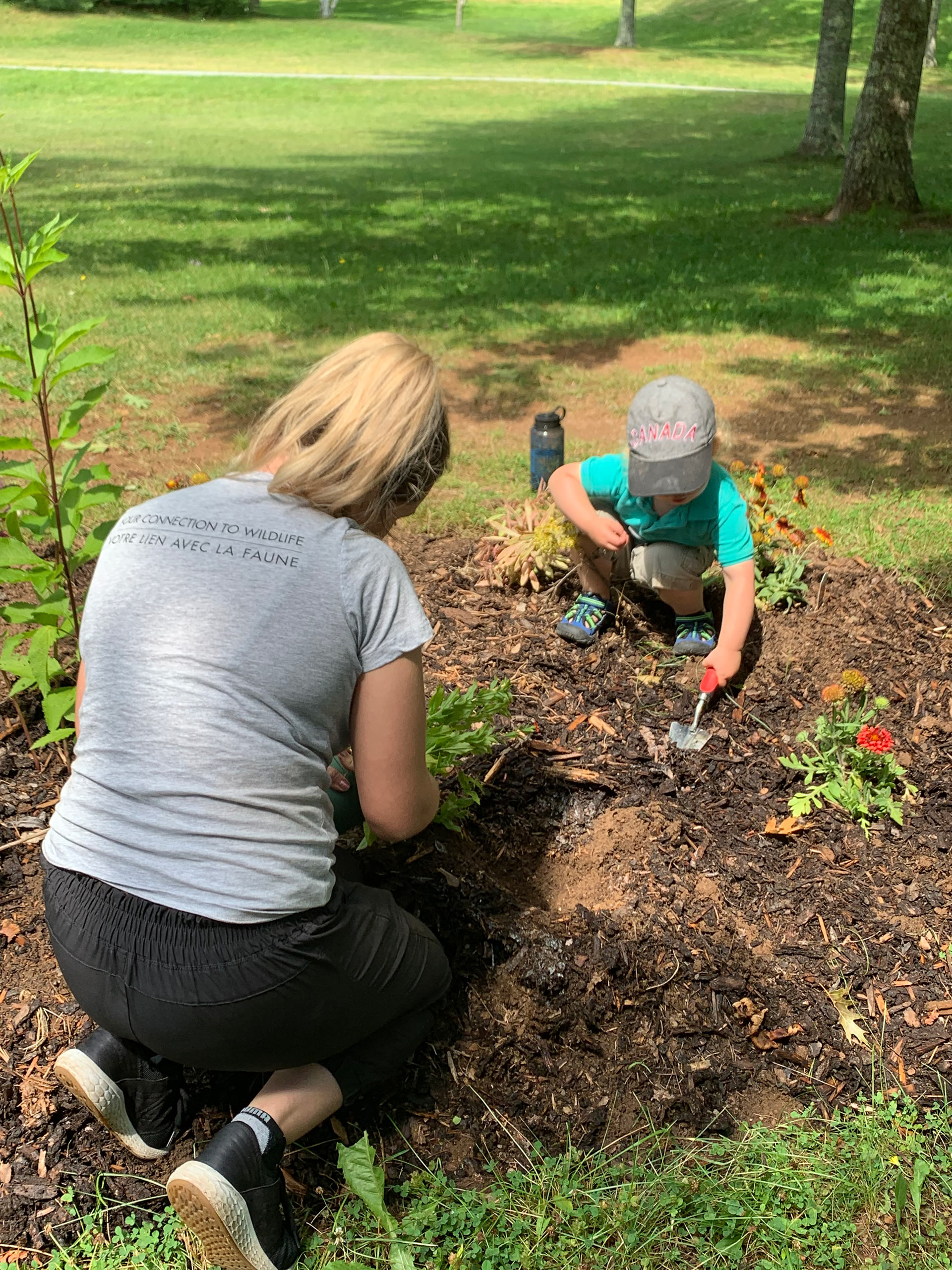
Breagh Campbell, CWF’s summer Conservation Education Intern, planting for butterflies with the public at Shubenacadie Wildlife Park. -
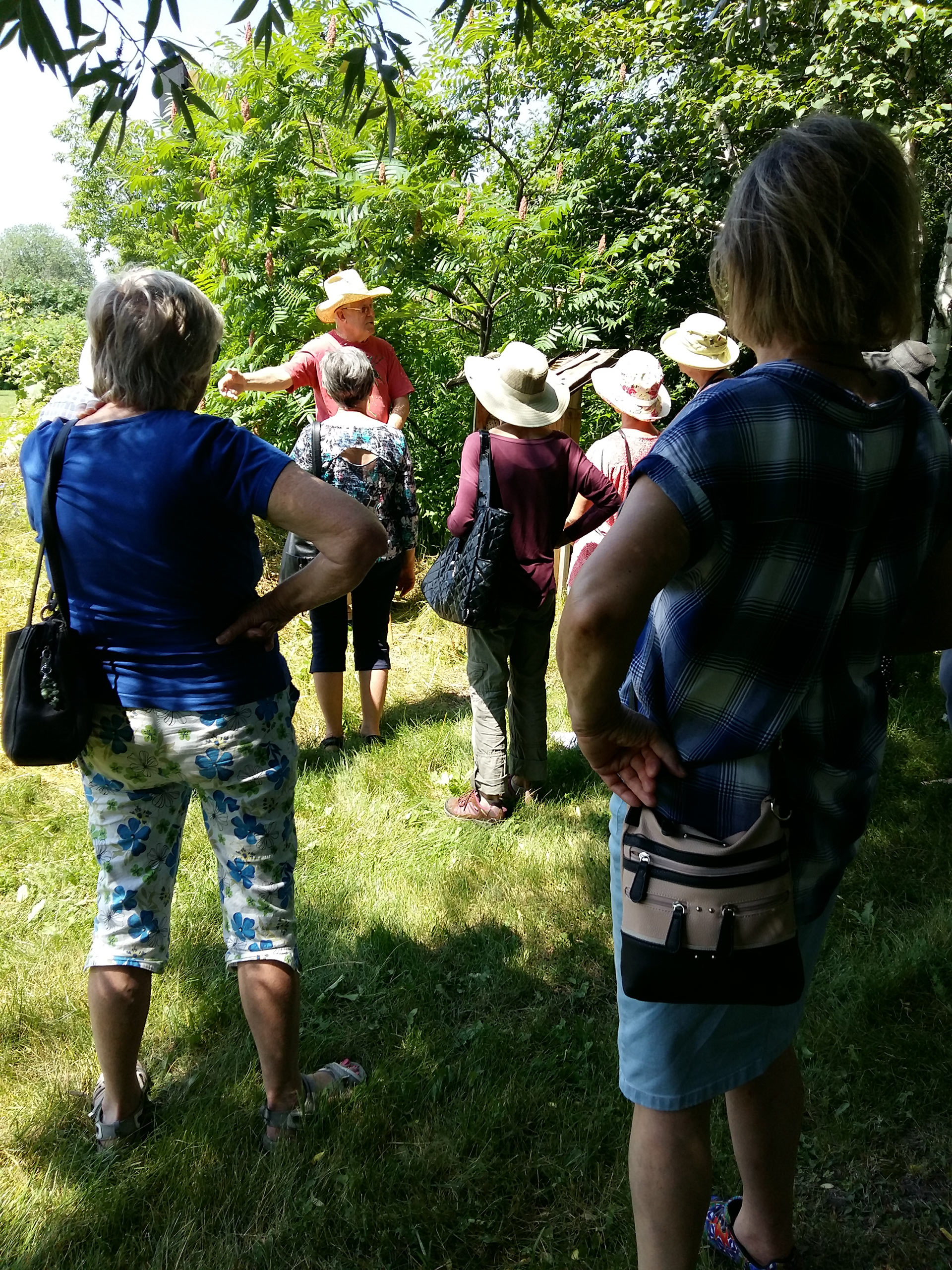
Expert Rob Longair explaining about solitary wasps near CWF’s insect hotel. -
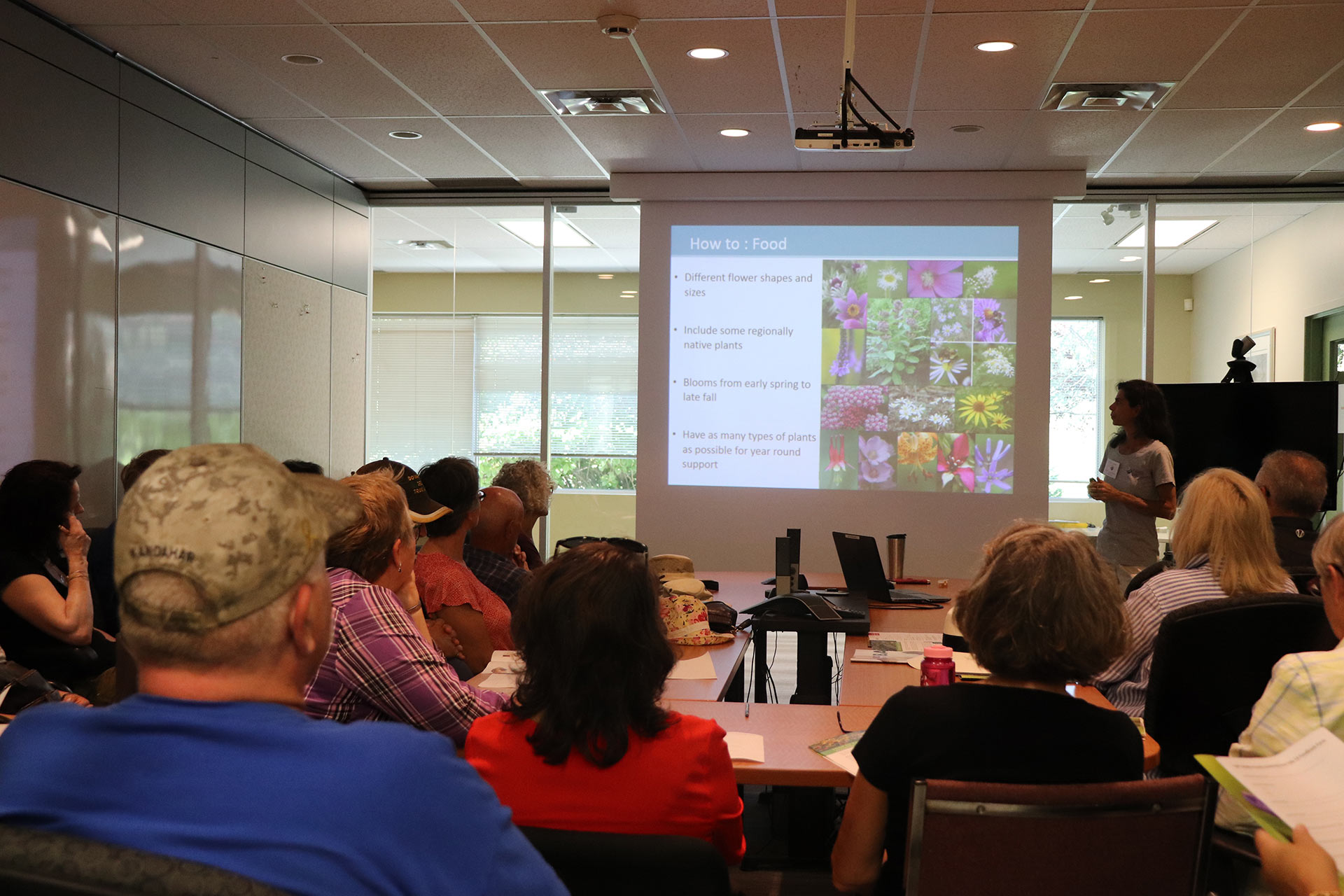
CWF presenting to a group on wildlife-friendly gardening. -

A guided walk around CWF’s Wildlife-friendly Demonstration Garden.
This summer we hosted wildlife-friendly gardening workshops in Ontario, Quebec and Nova Scotia.
- Twenty-seven gardening workshops, presentations and guided tours for adults and youth in the Toronto, Ottawa, Montreal and Halifax areas.
- Many of these were in partnership with organizations and businesses such as The Home Depot, Toronto Botanical Gardens, Shubenacadie Wildlife Park, Gees Bees Honey Company and Le Nichoir, a wild bird rehabilitation centre.
- Others were supported by local insect experts who delighted participants with fascinating facts about our varied pollinators.
- Over 400 people participated and came away with ideas and inspiration for making their gardens more wildlife-friendly.

